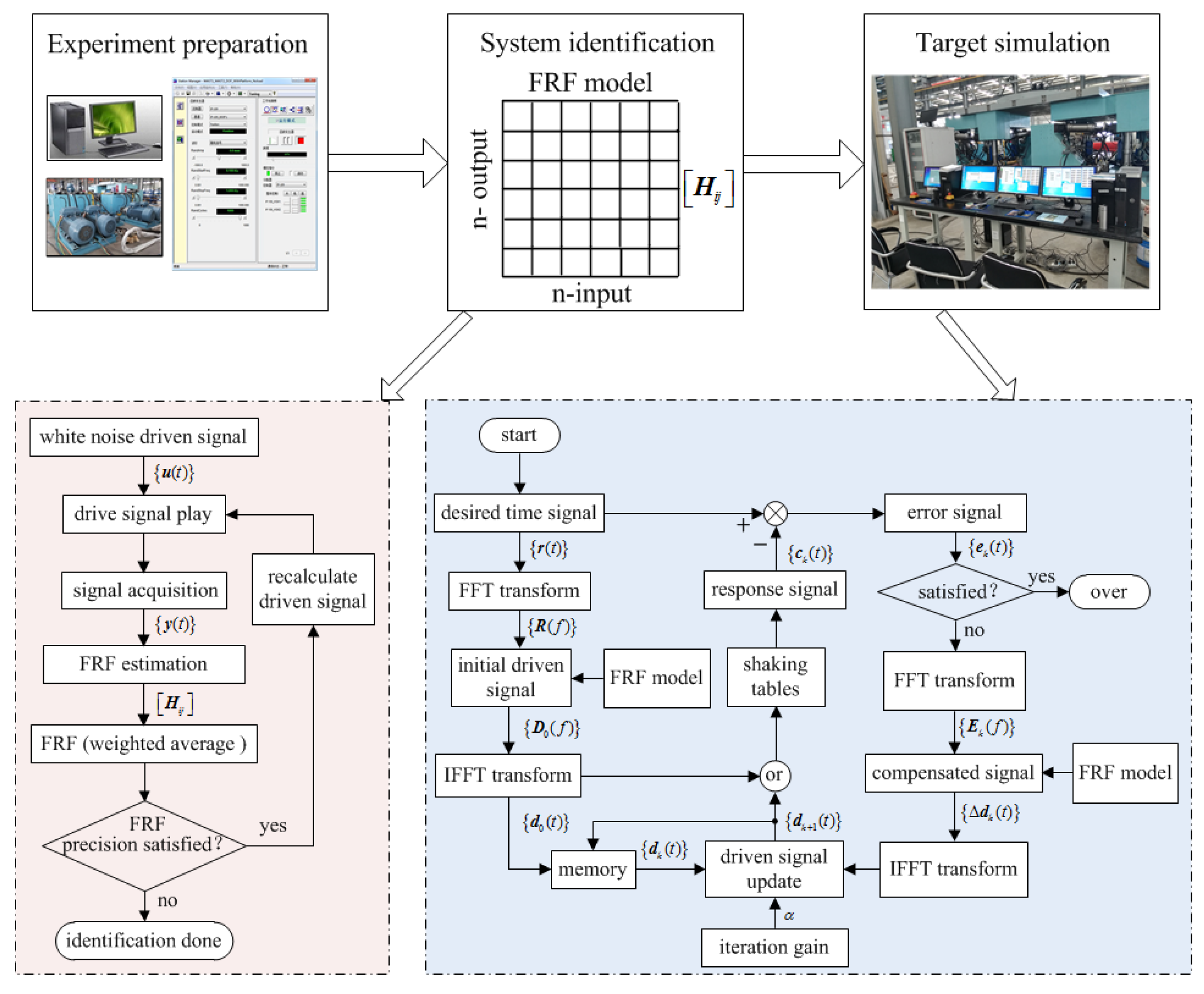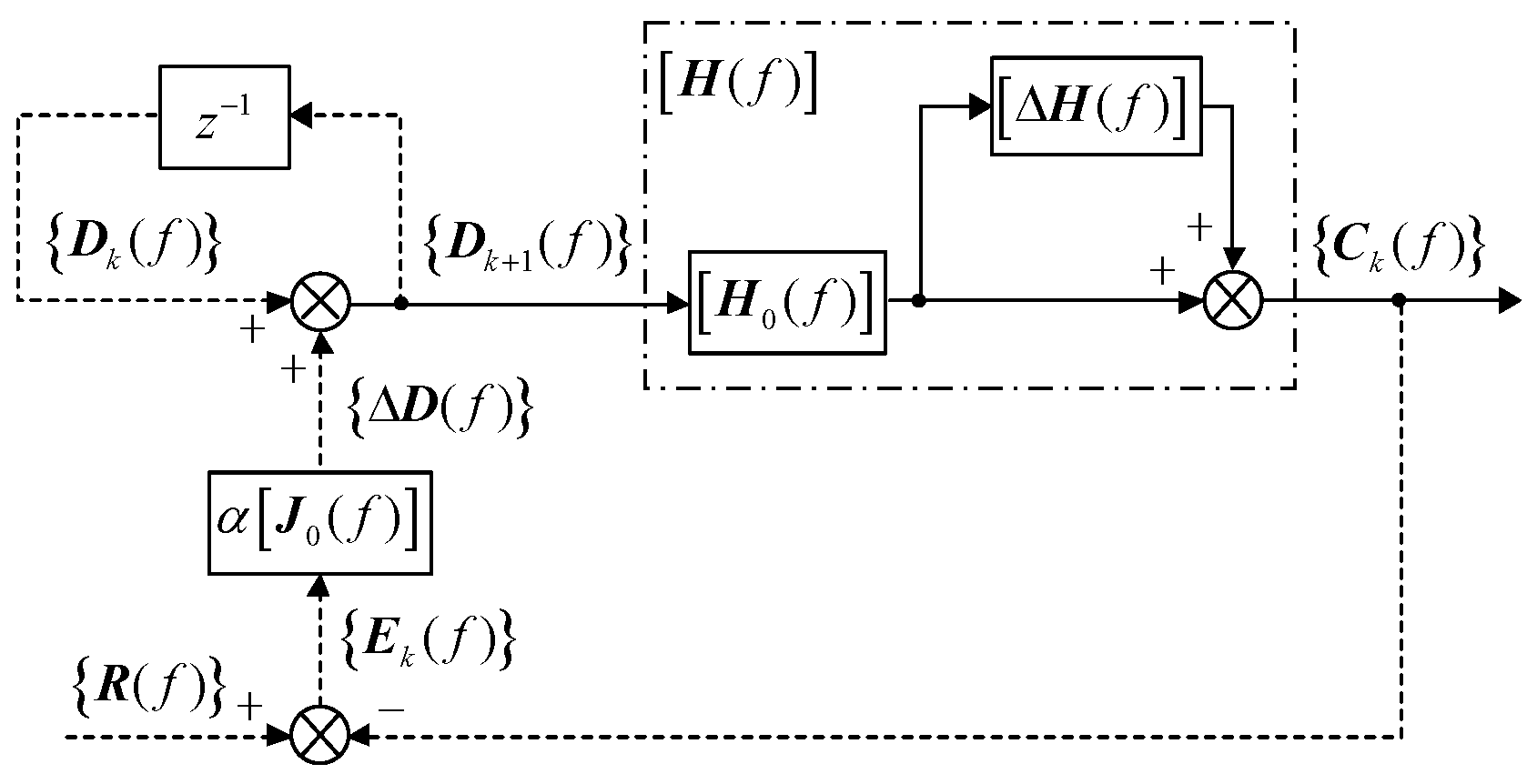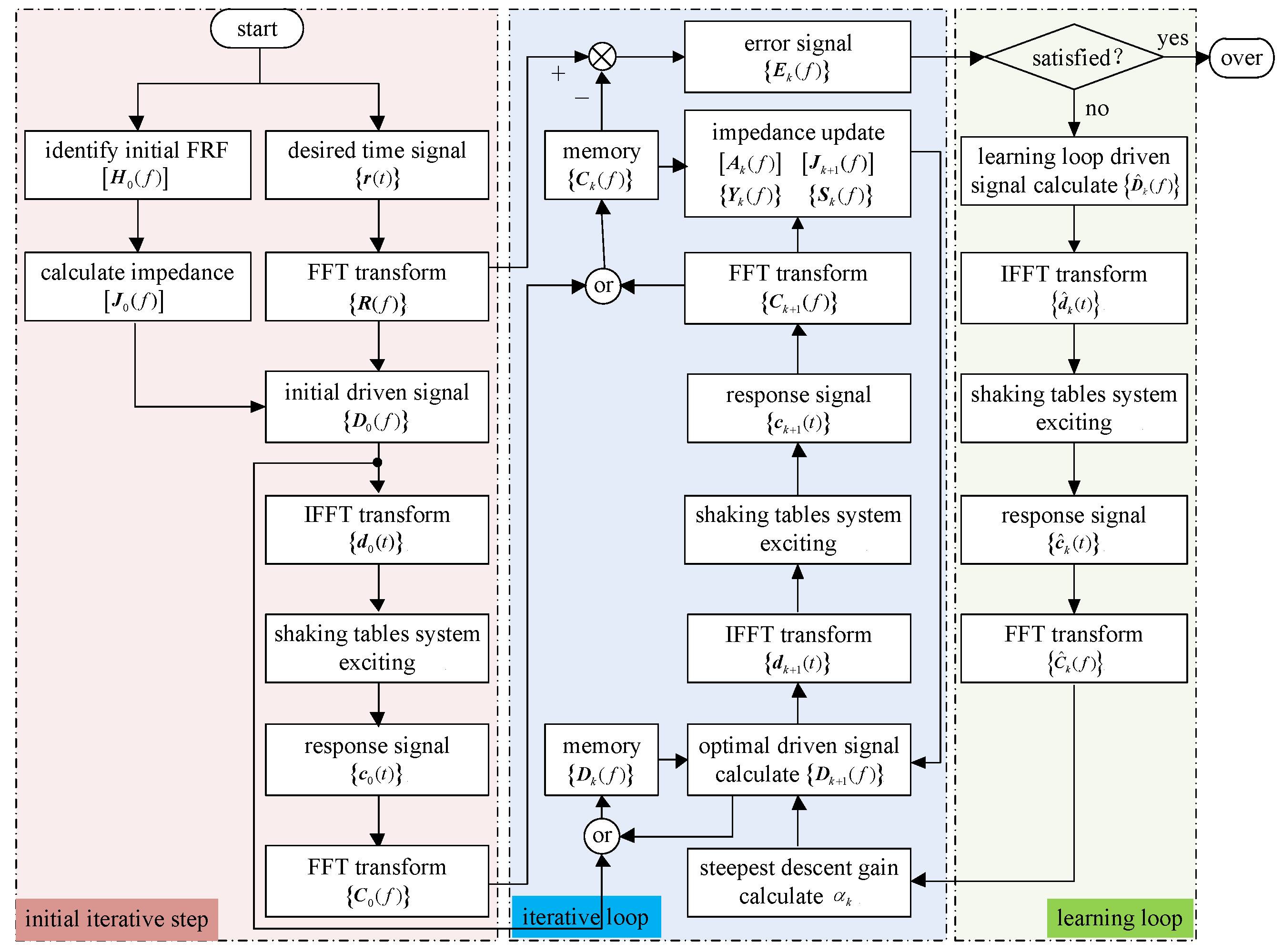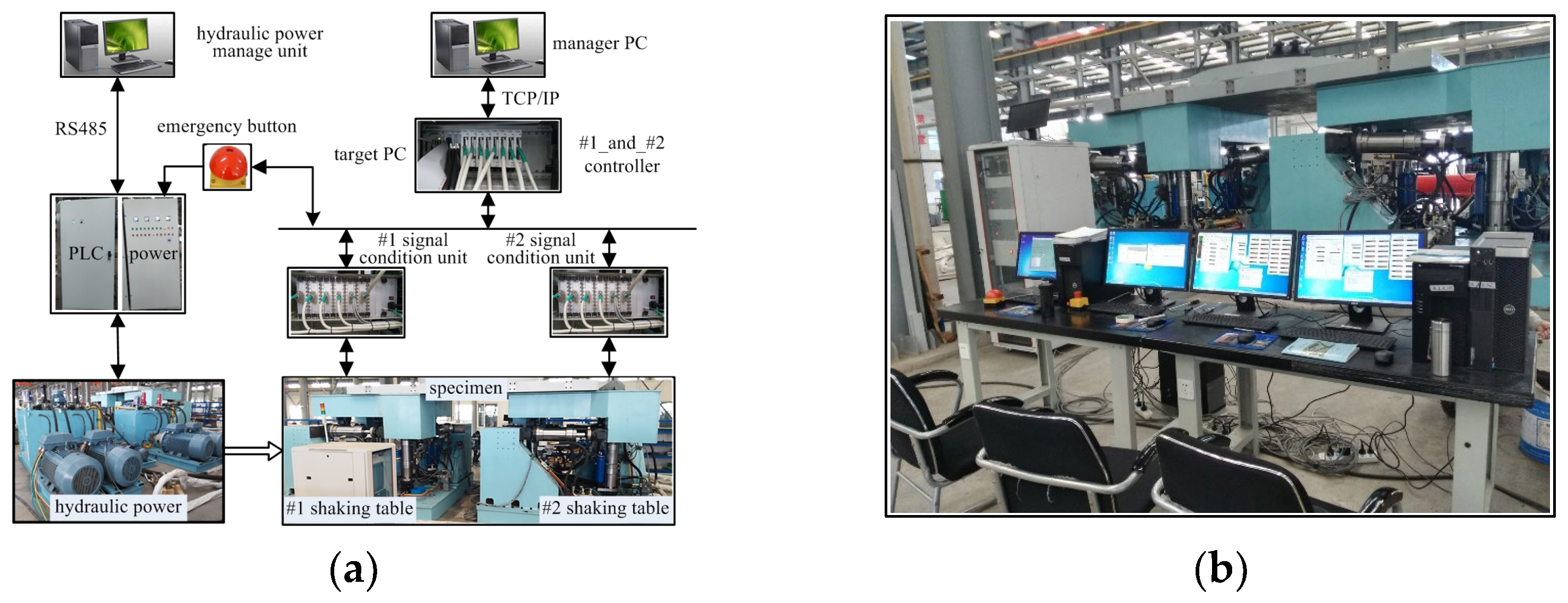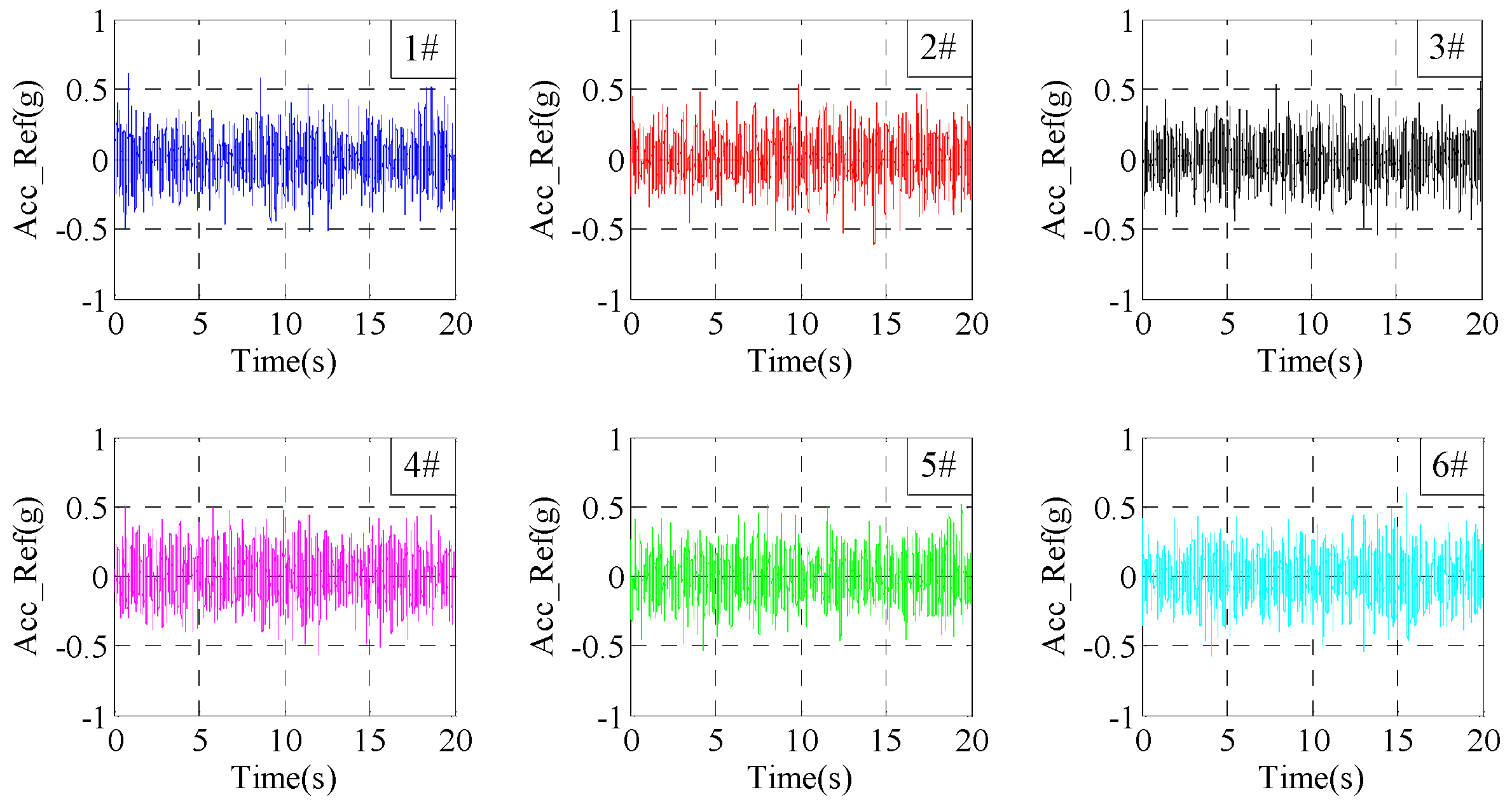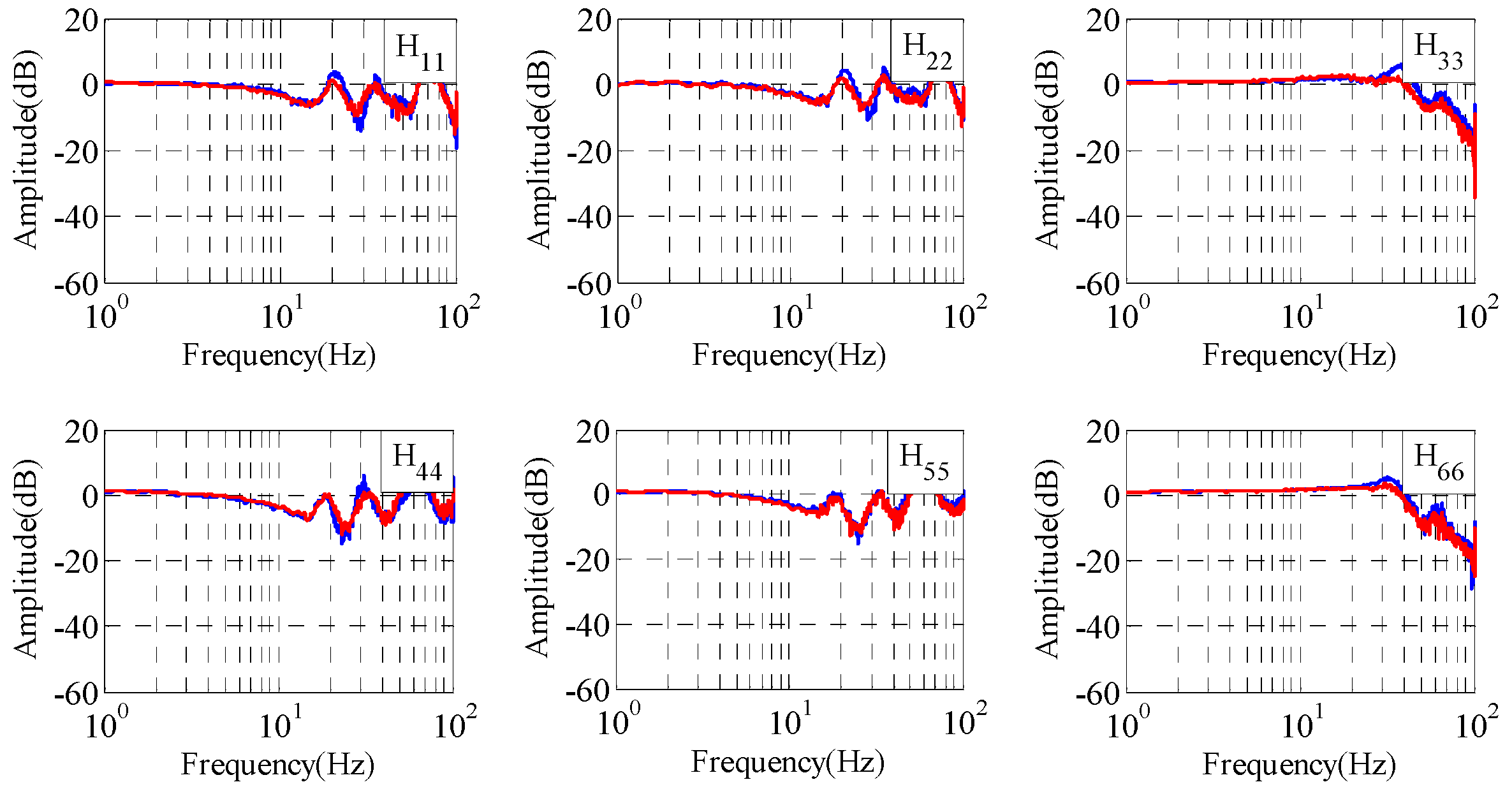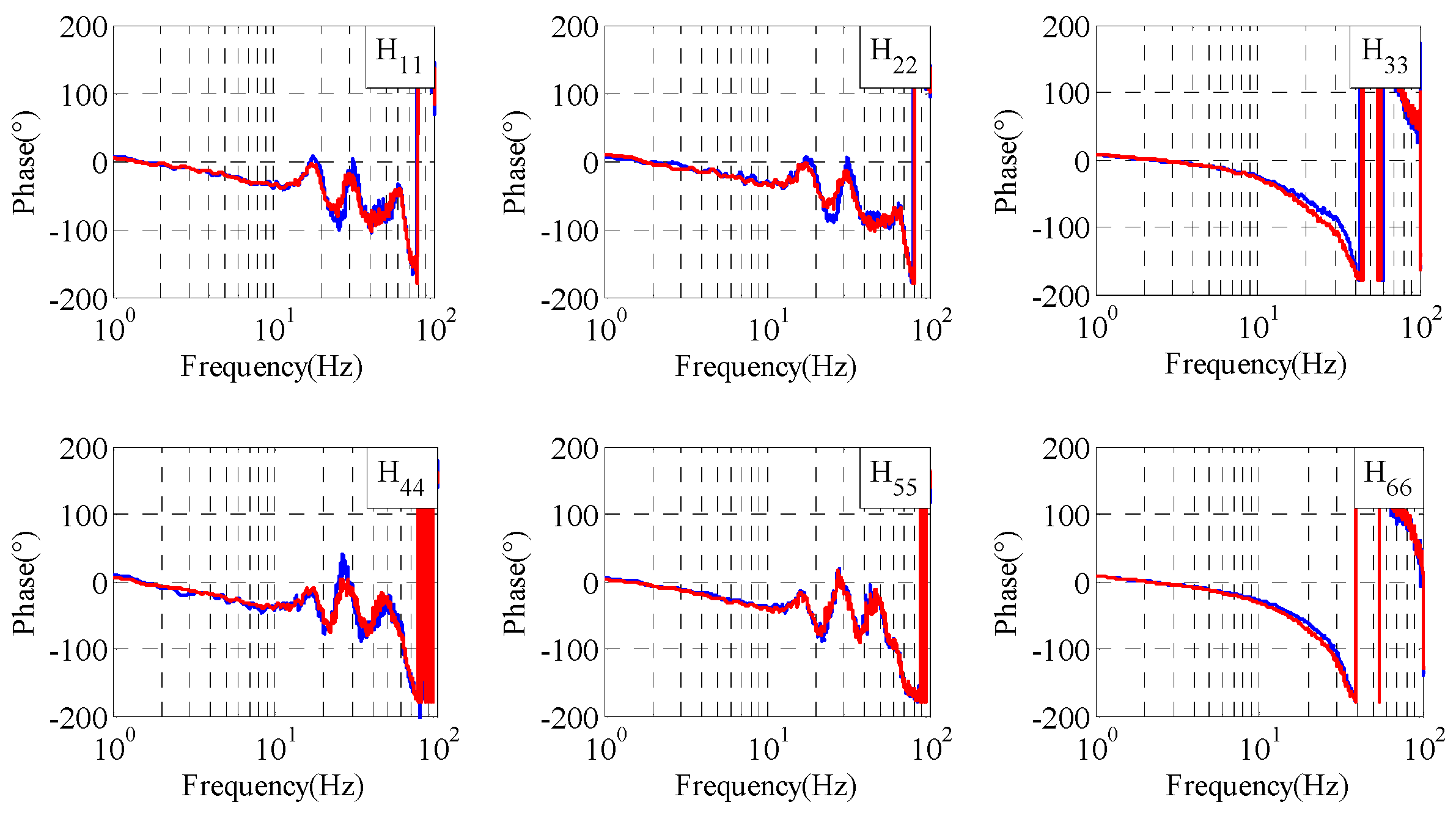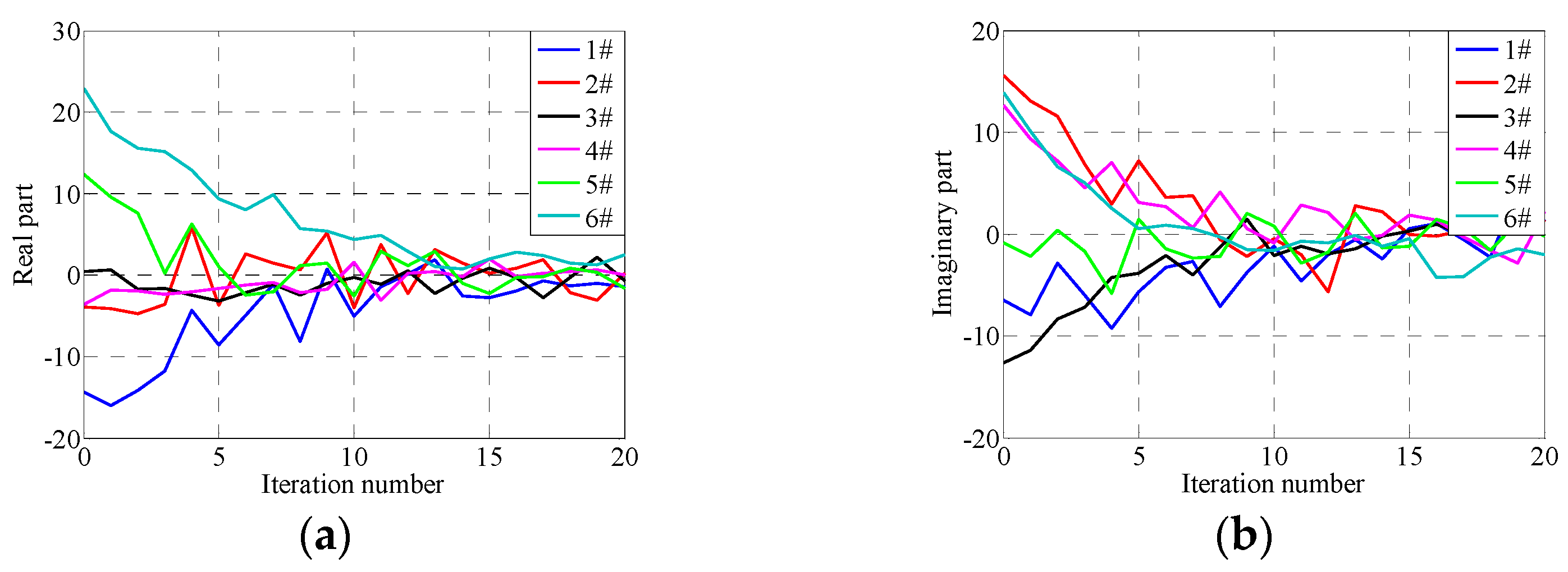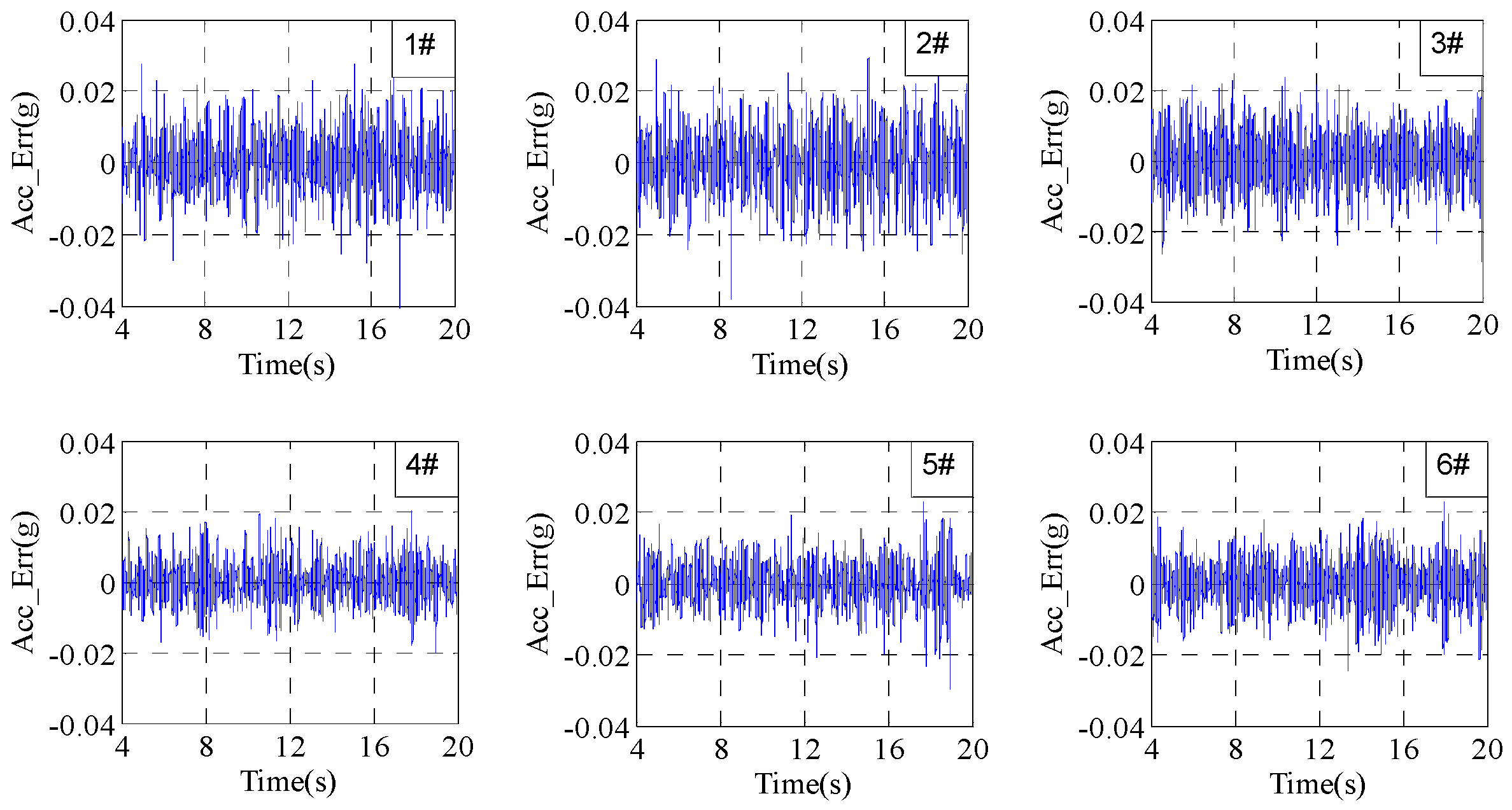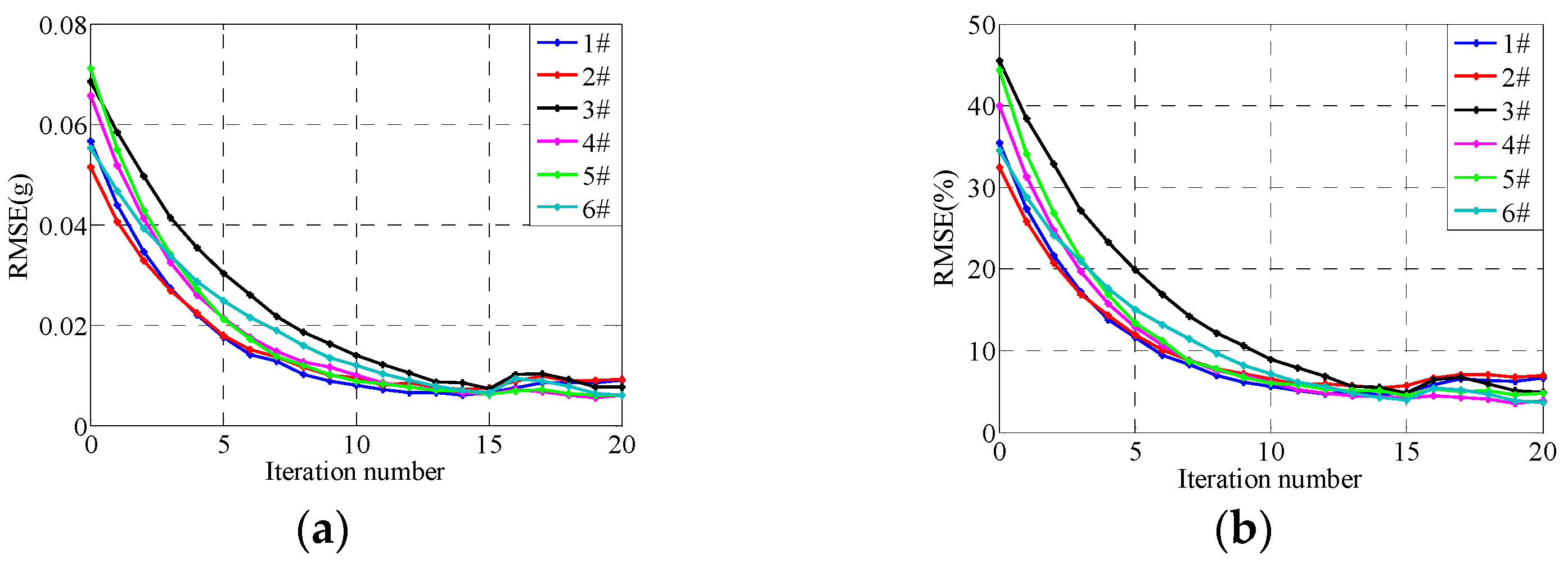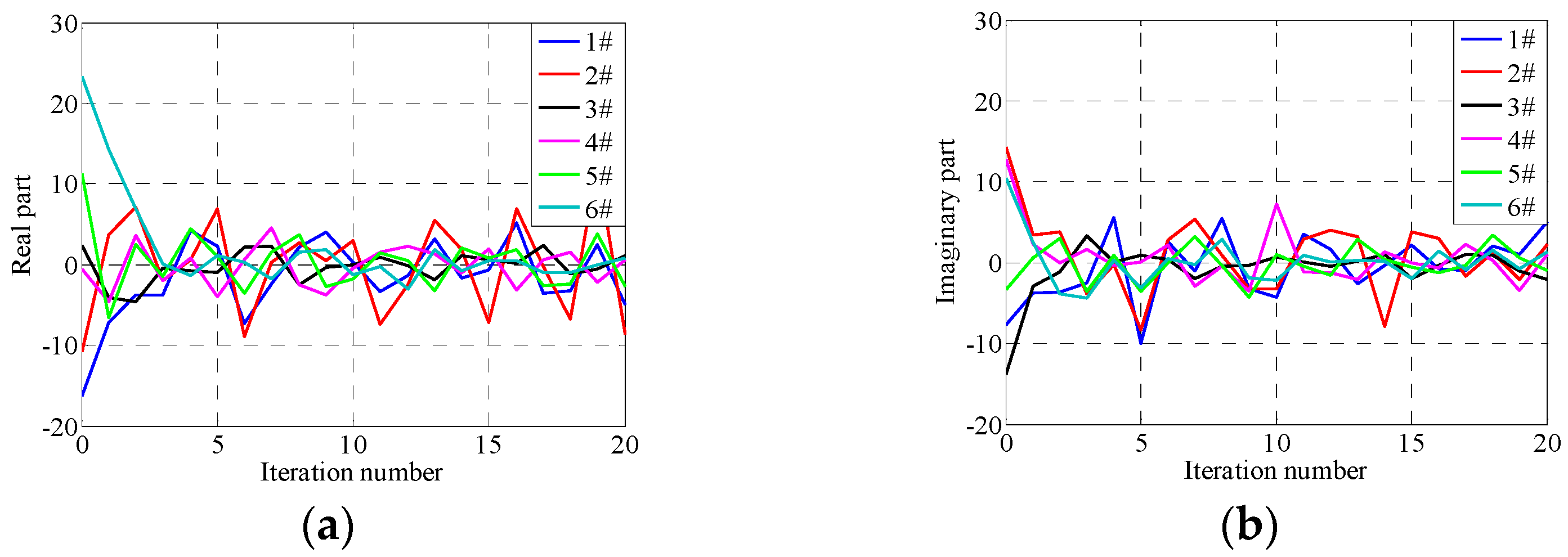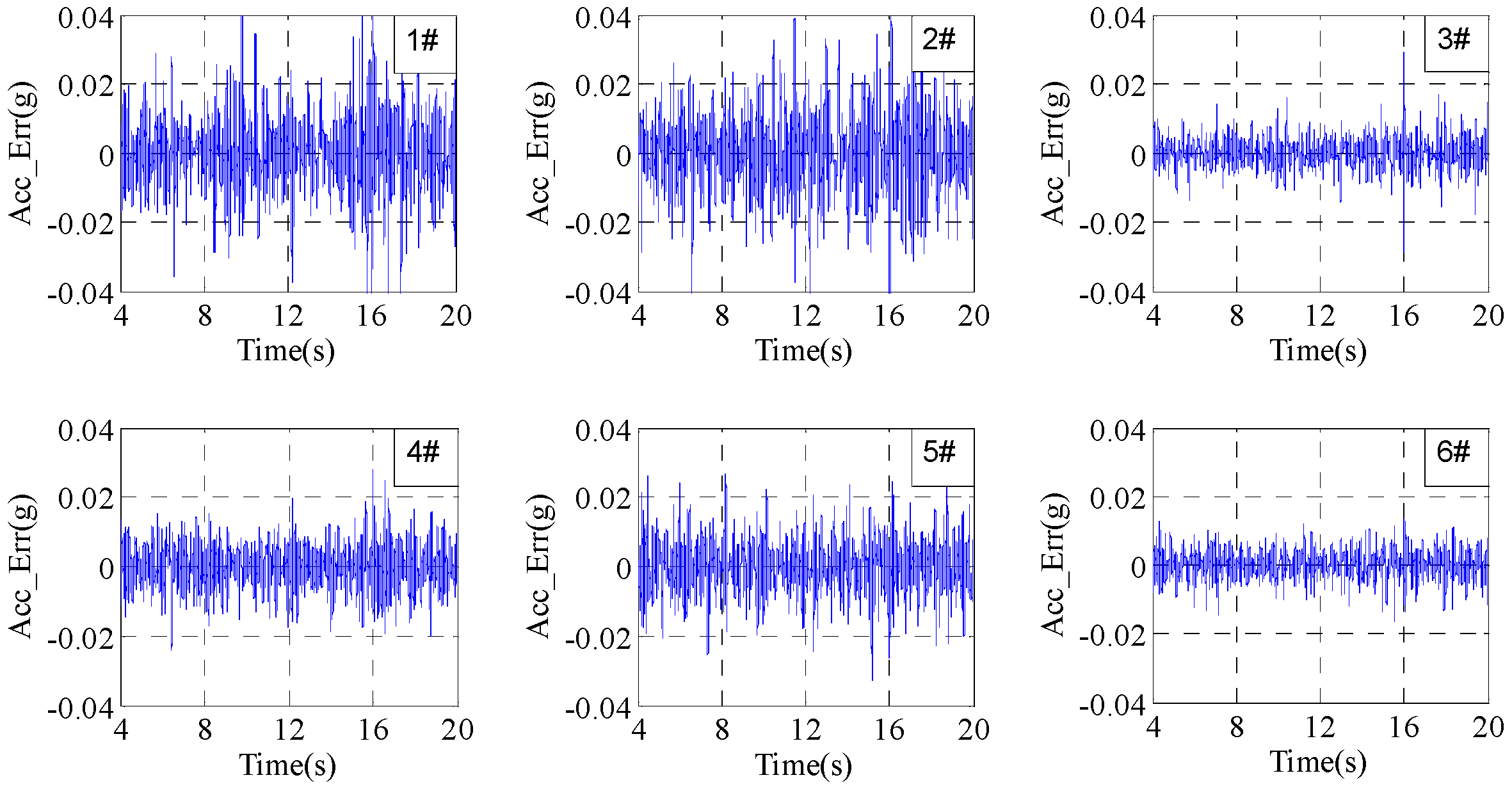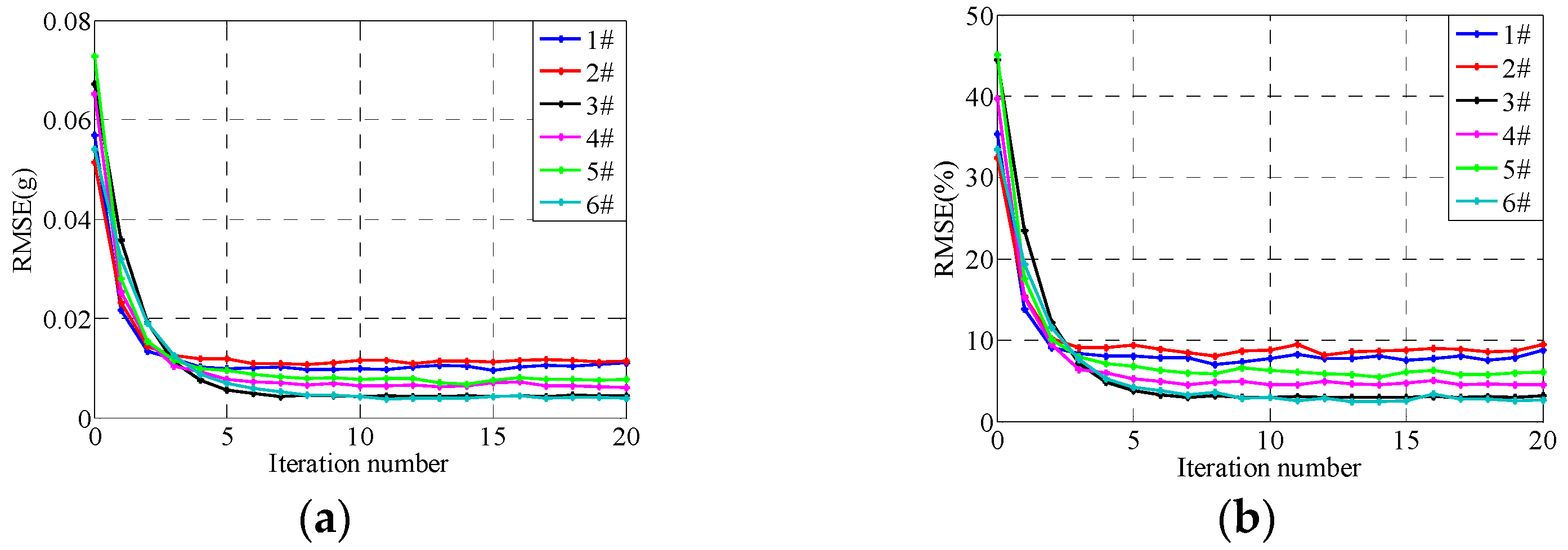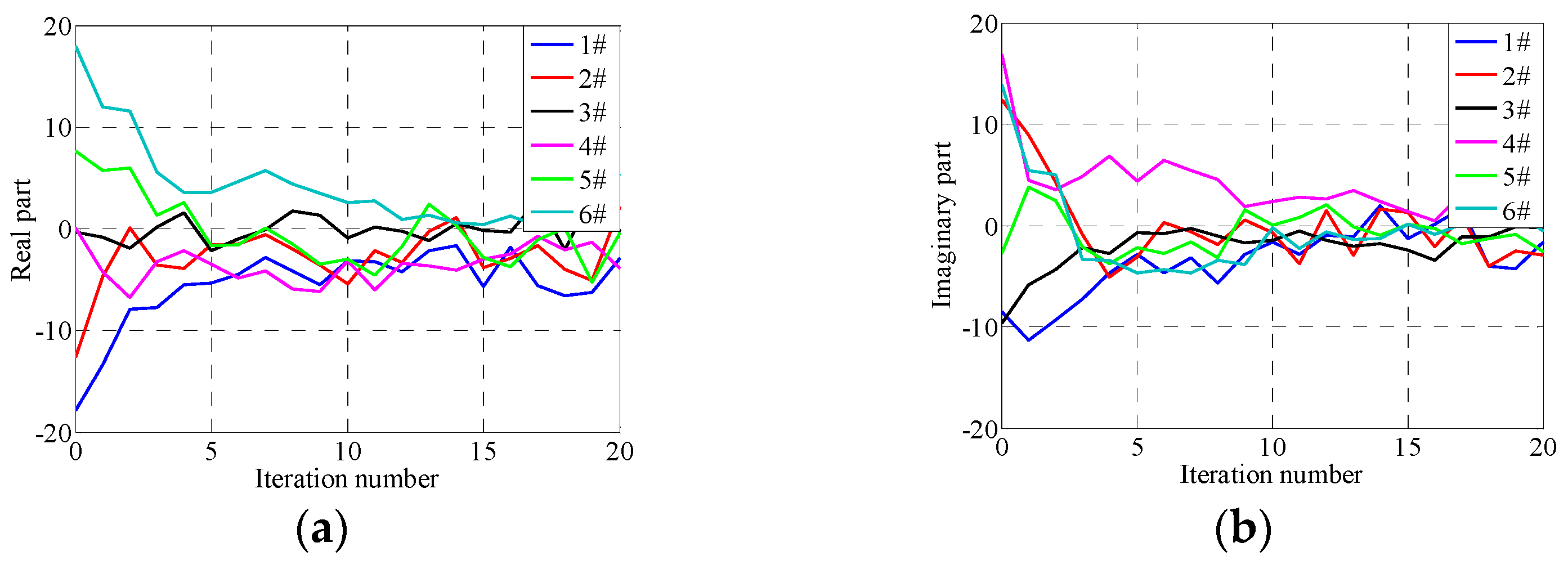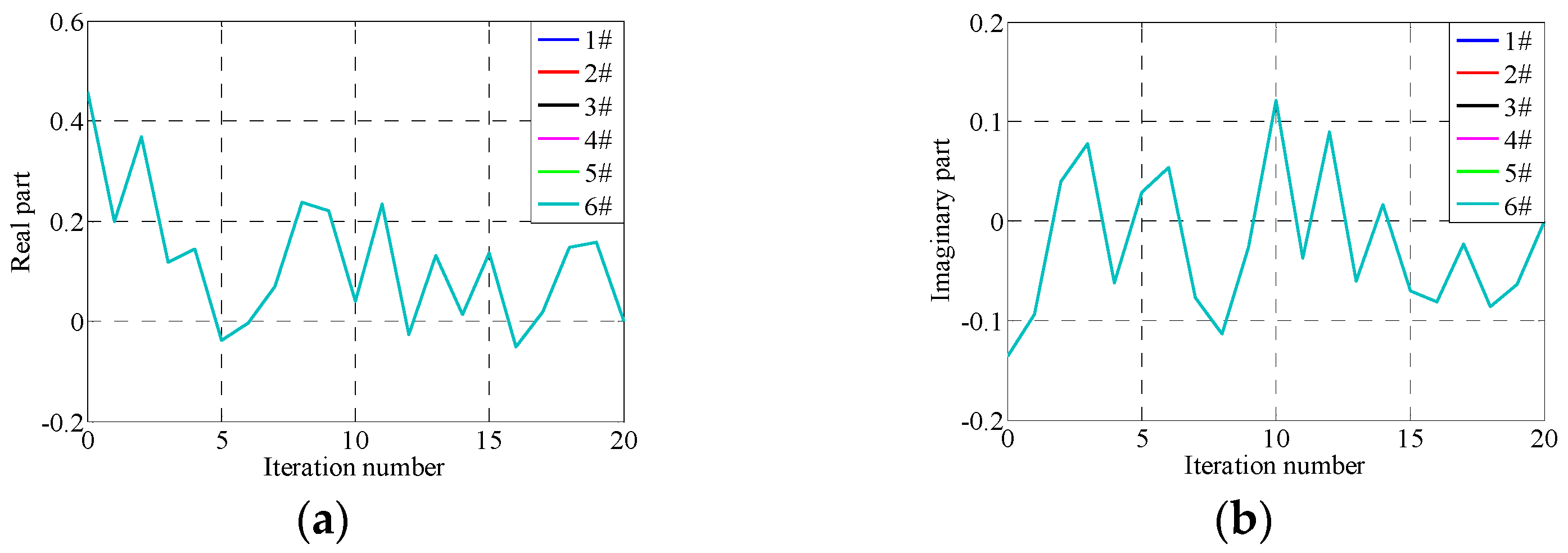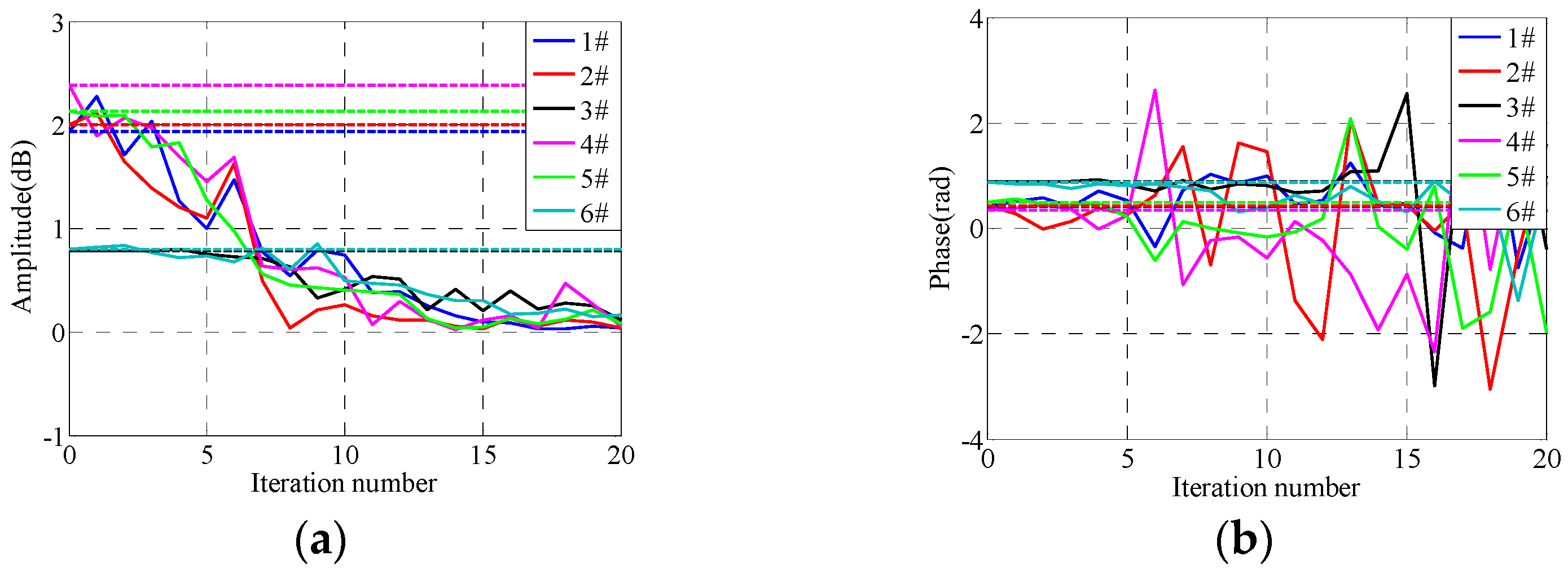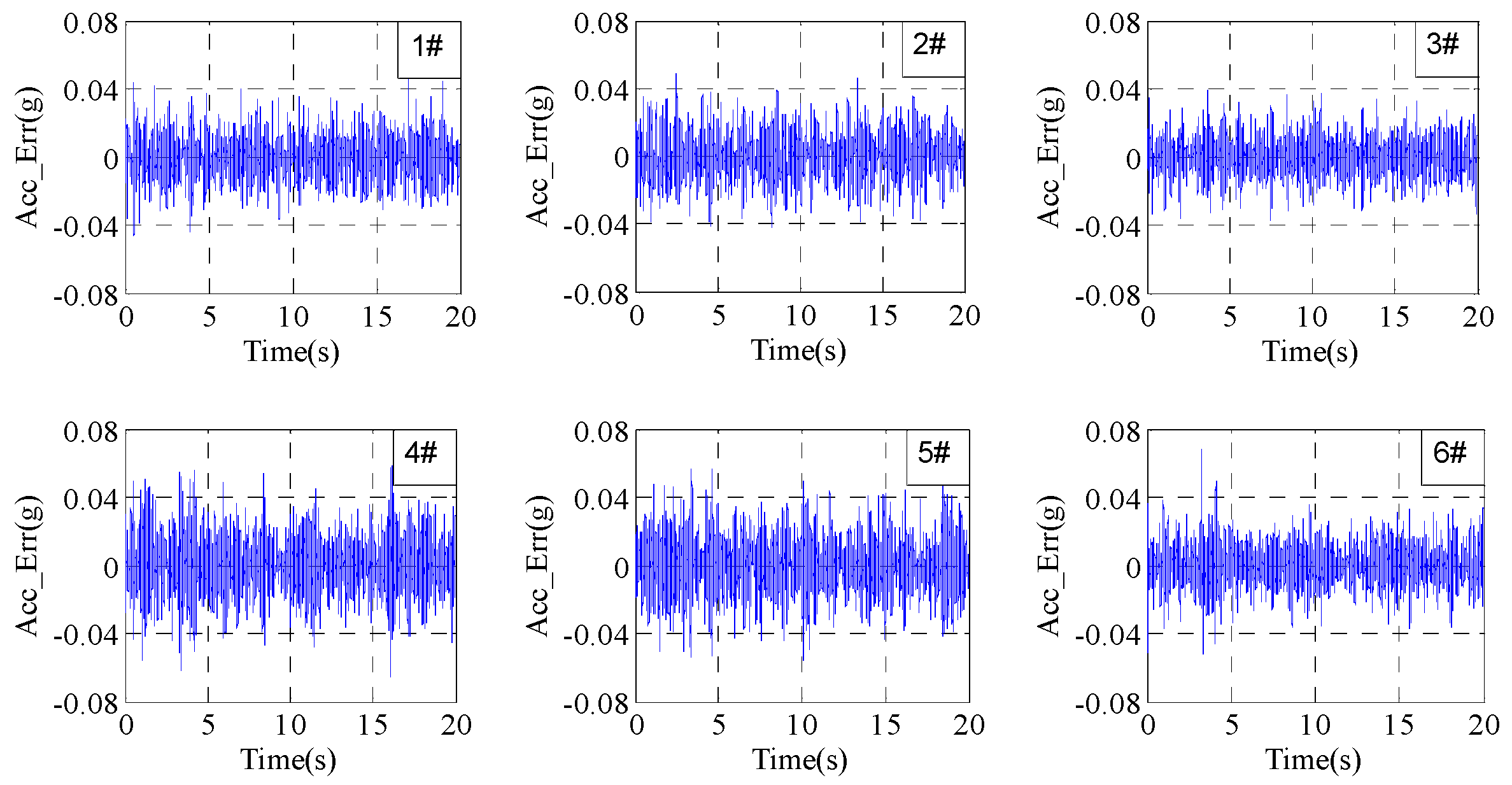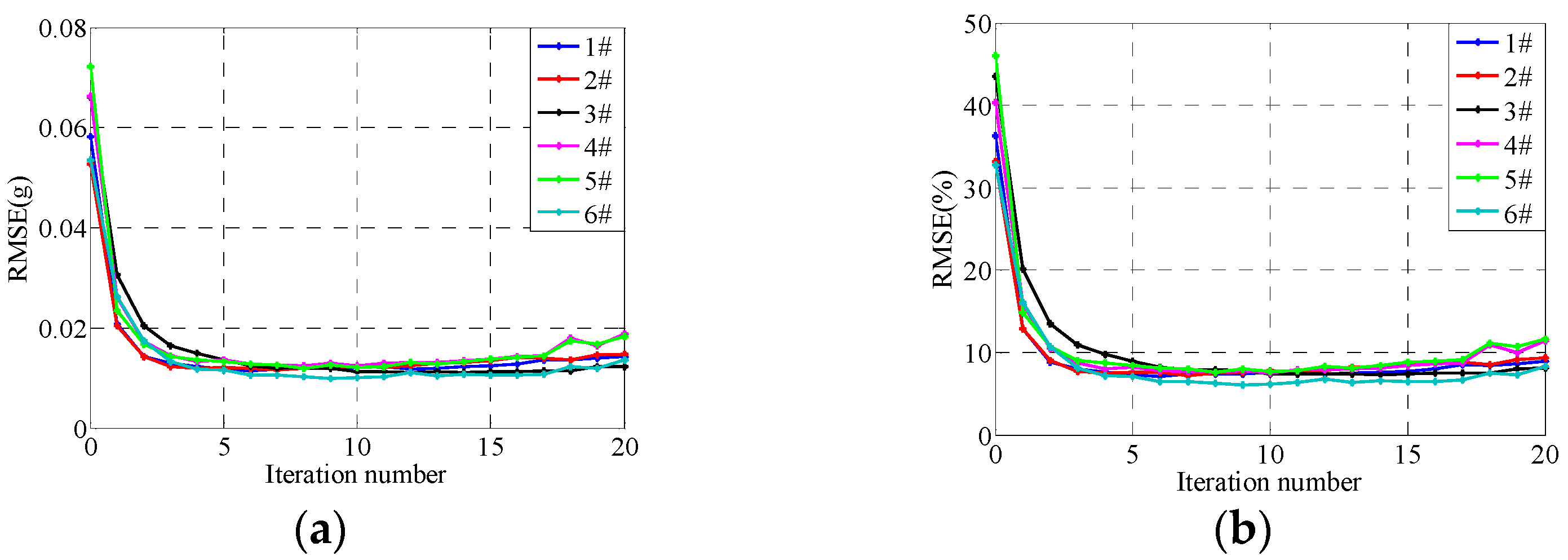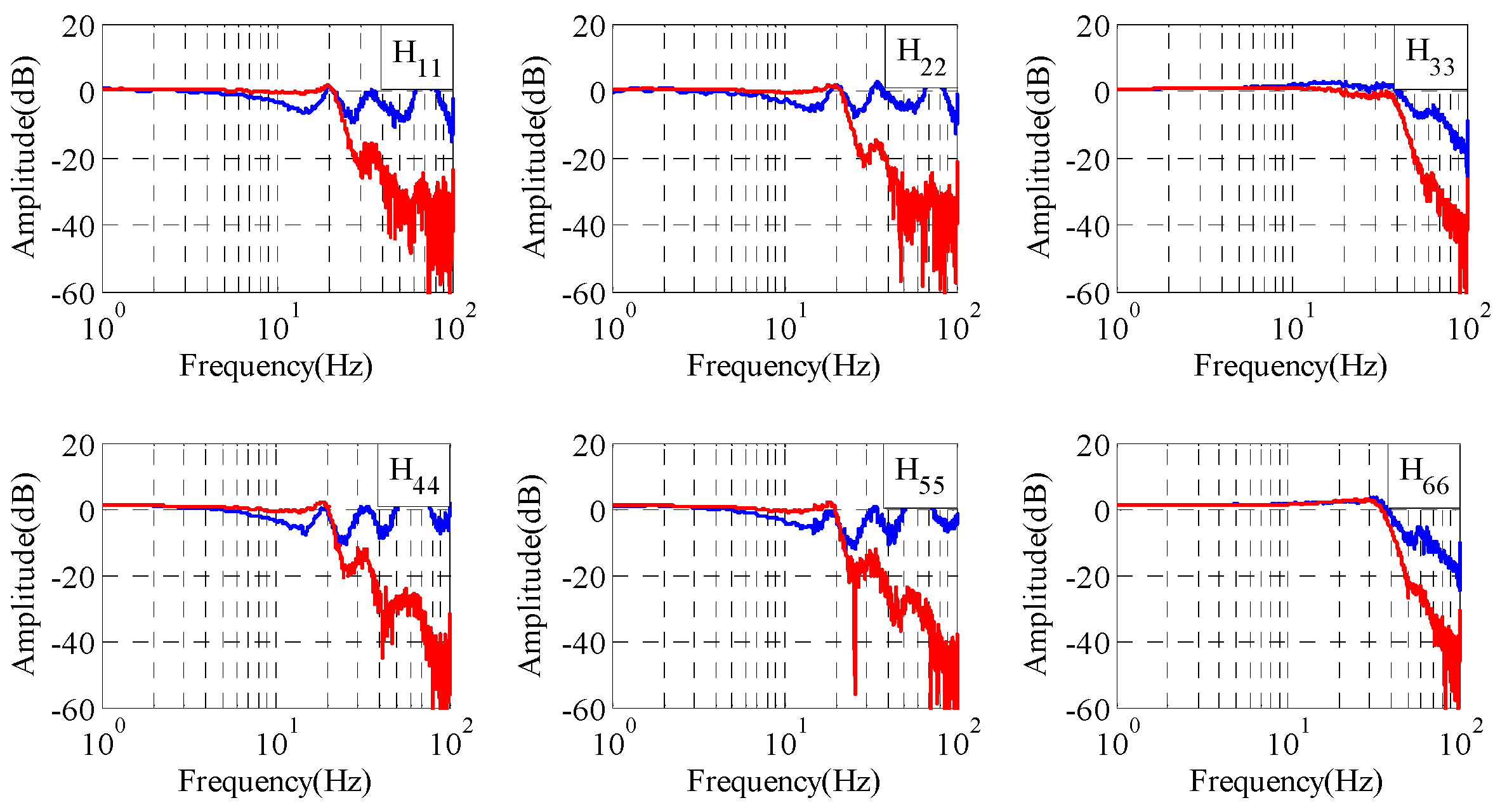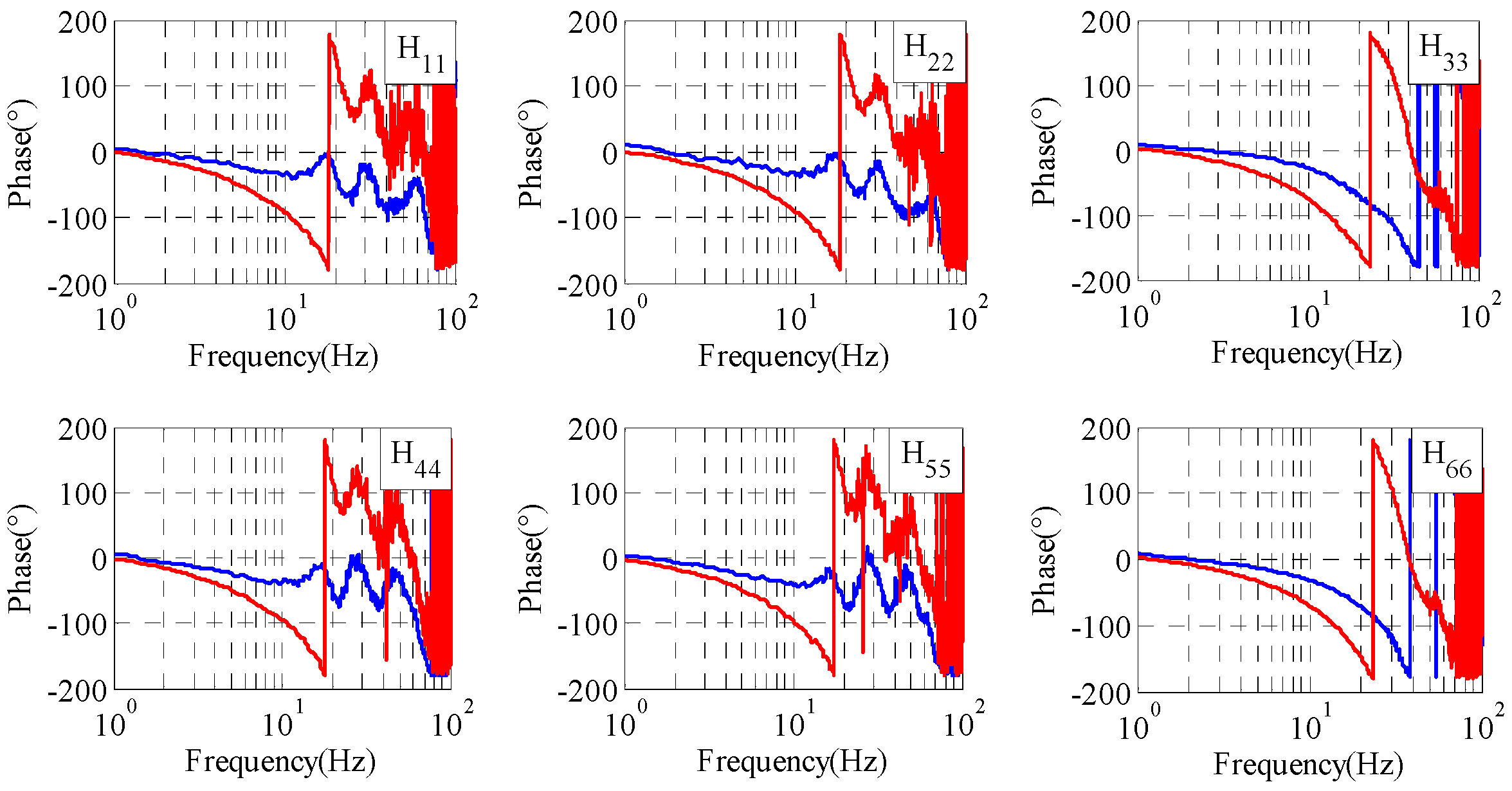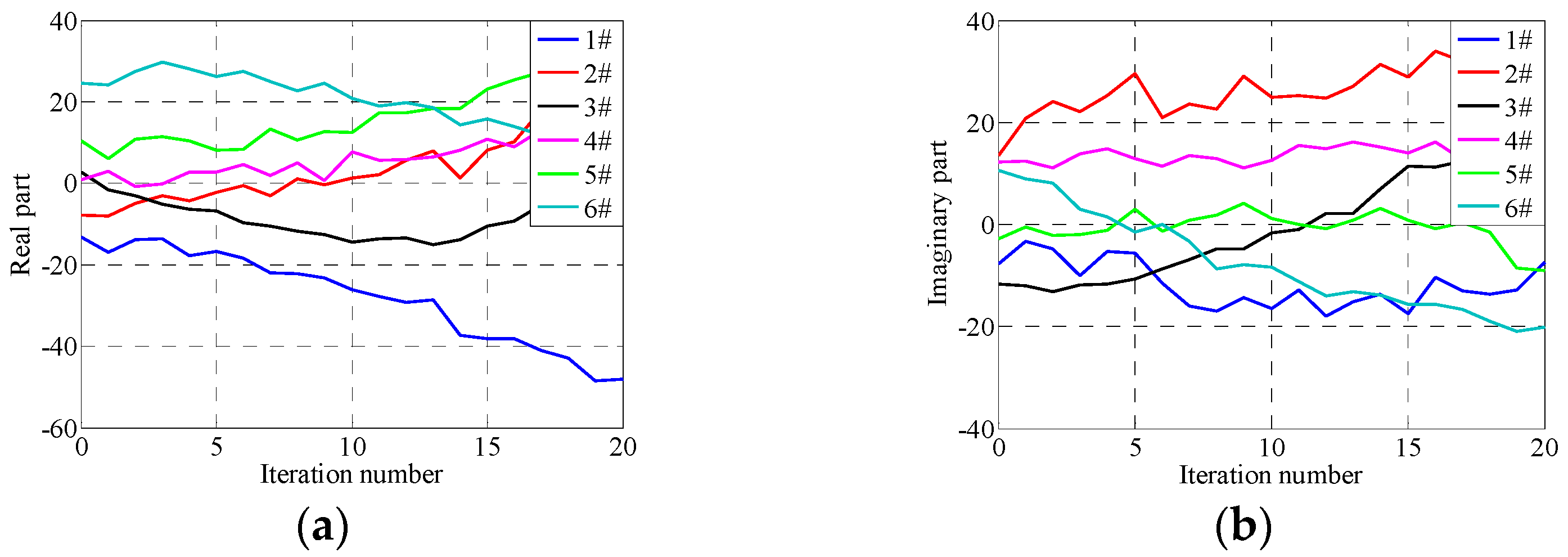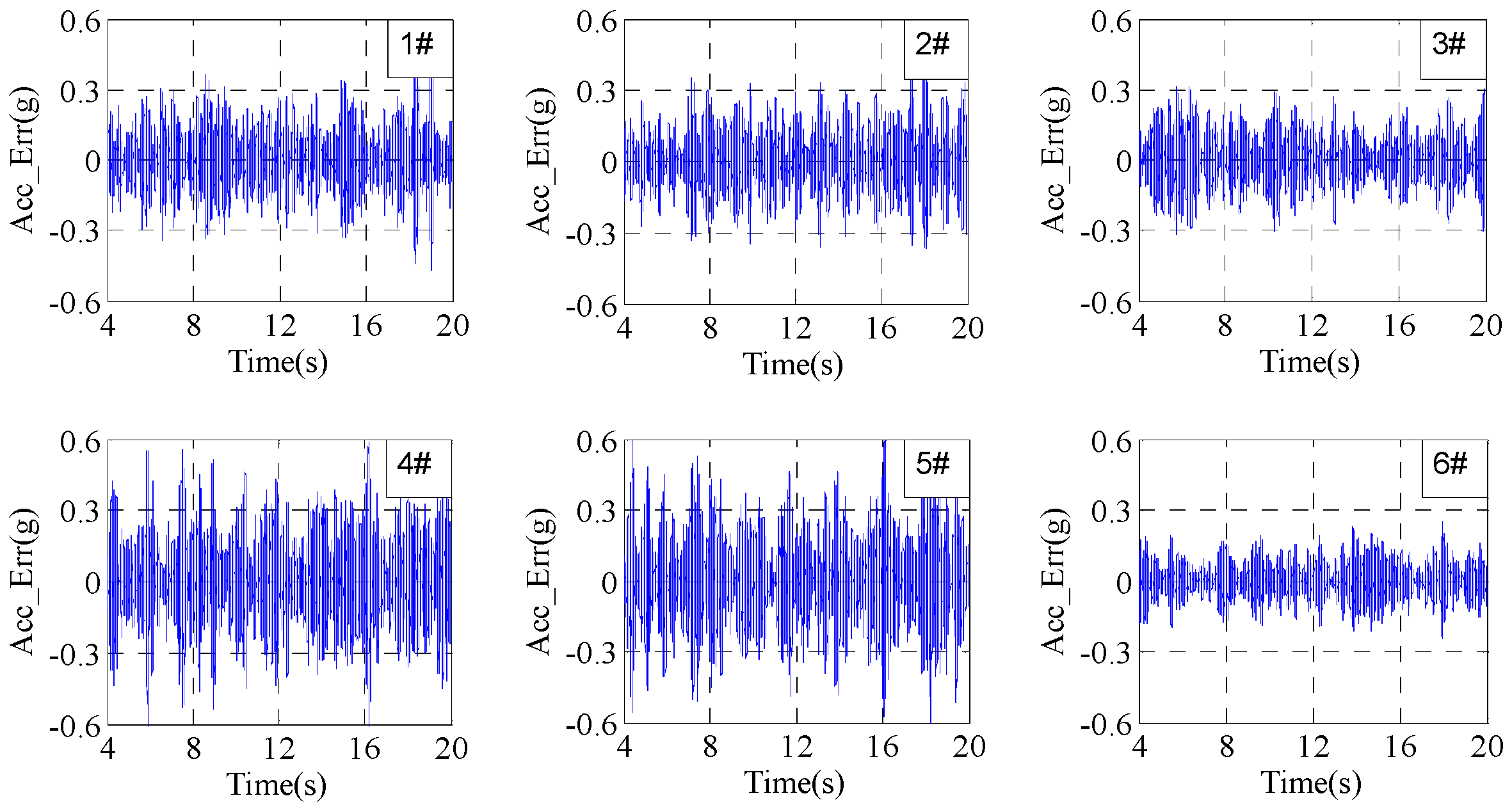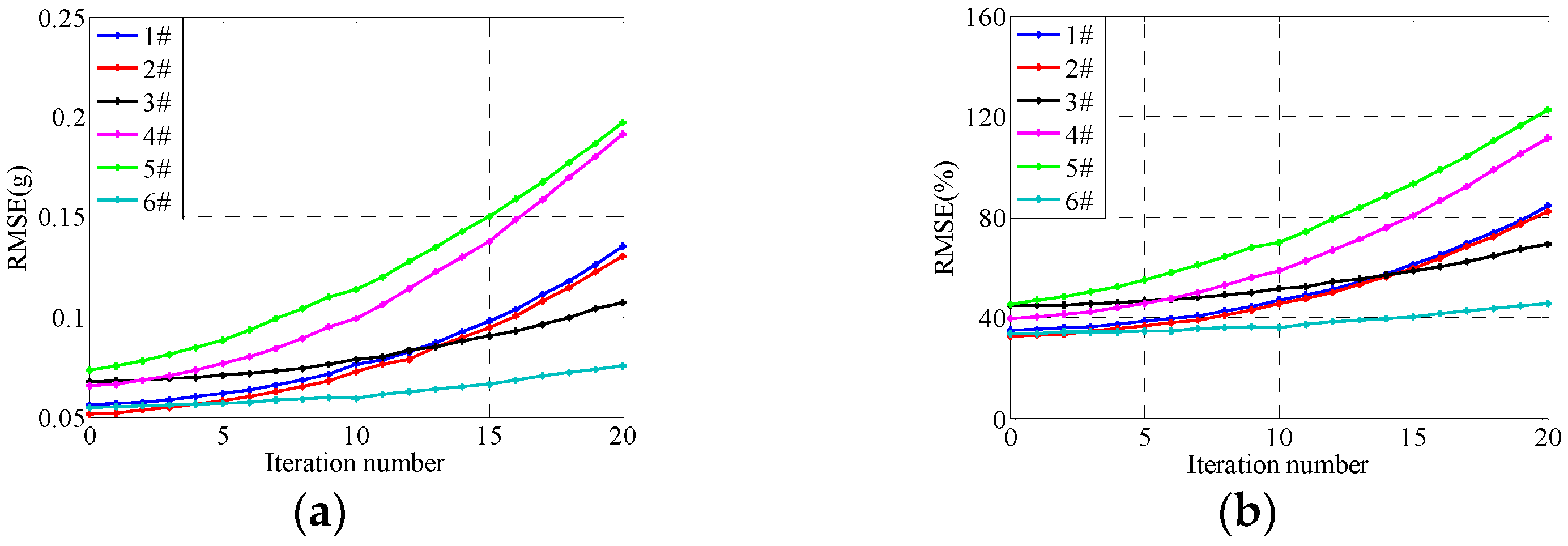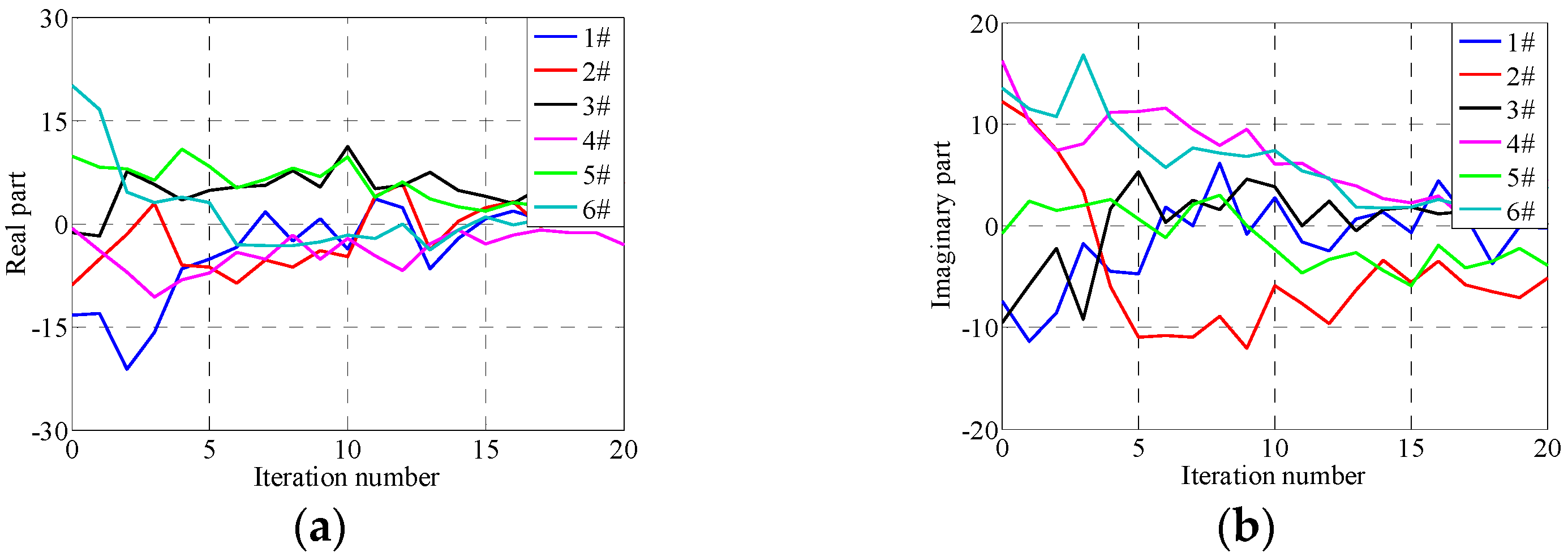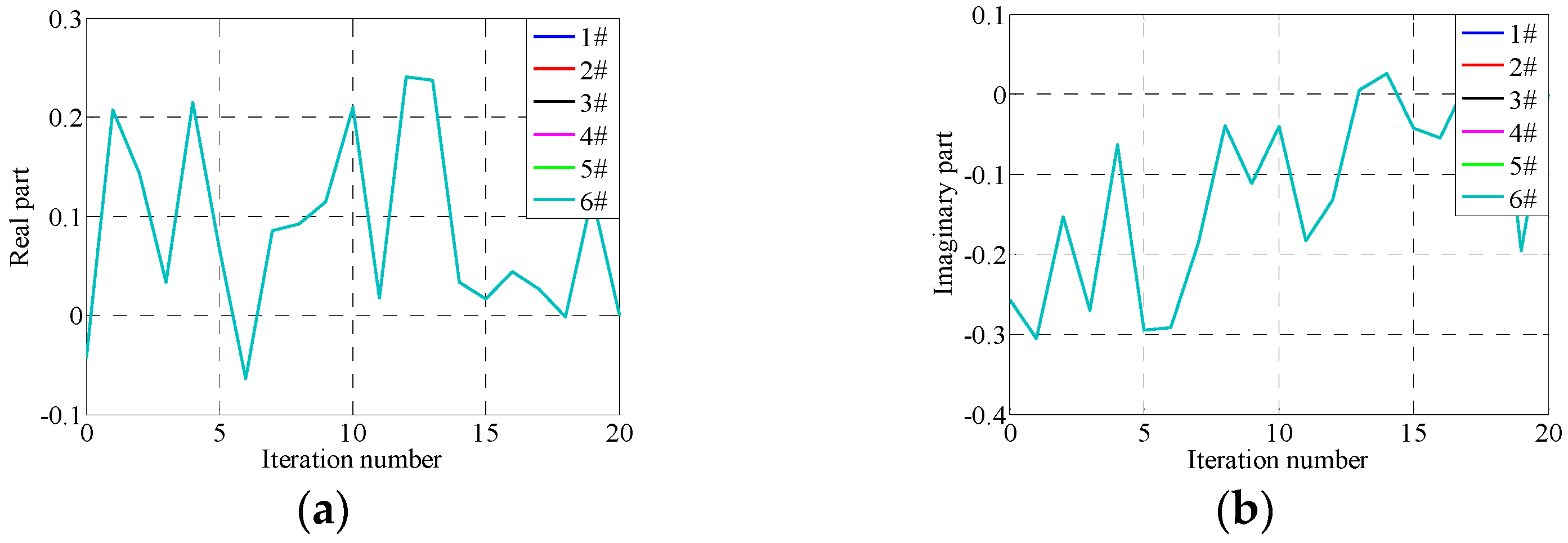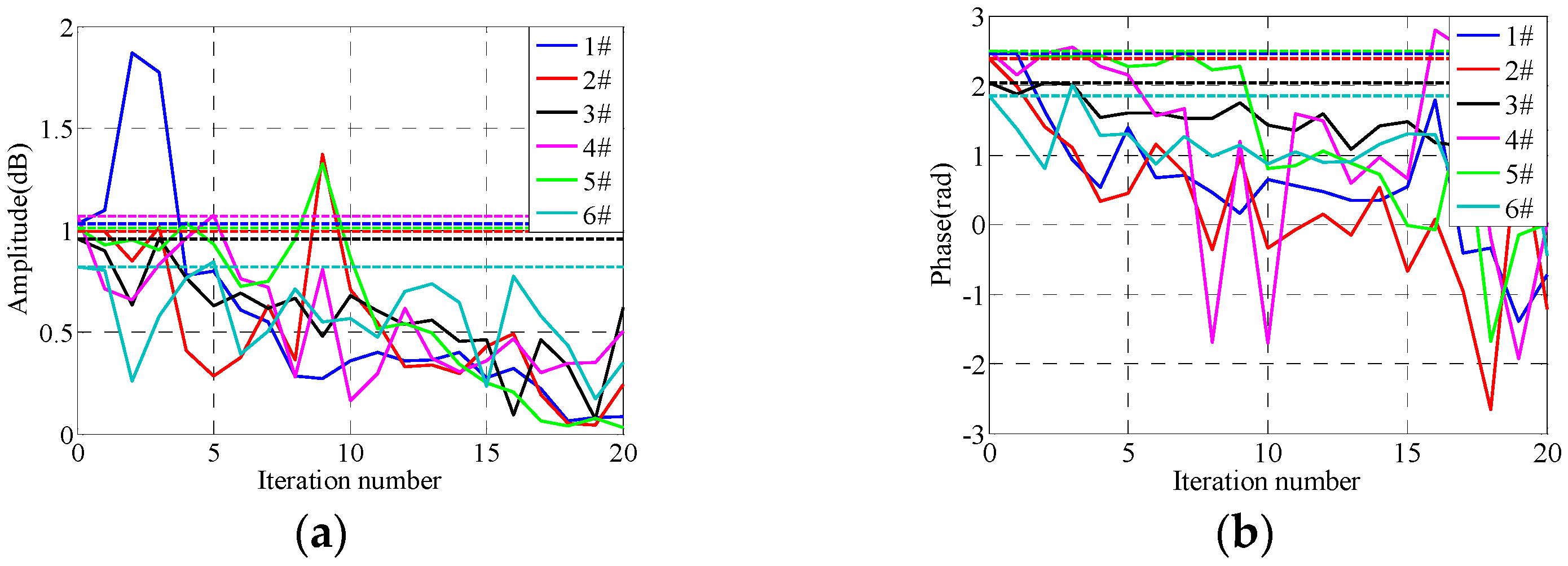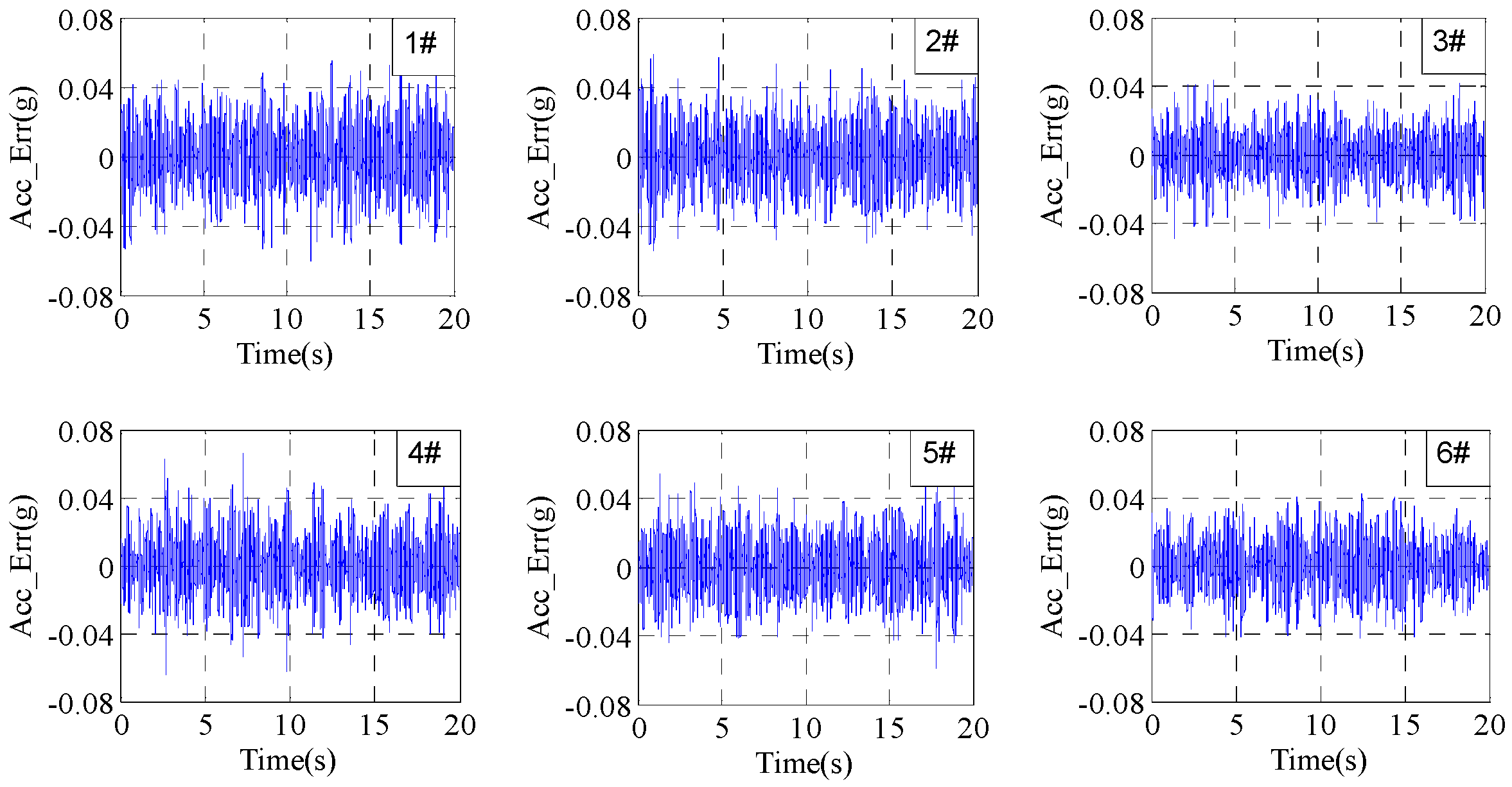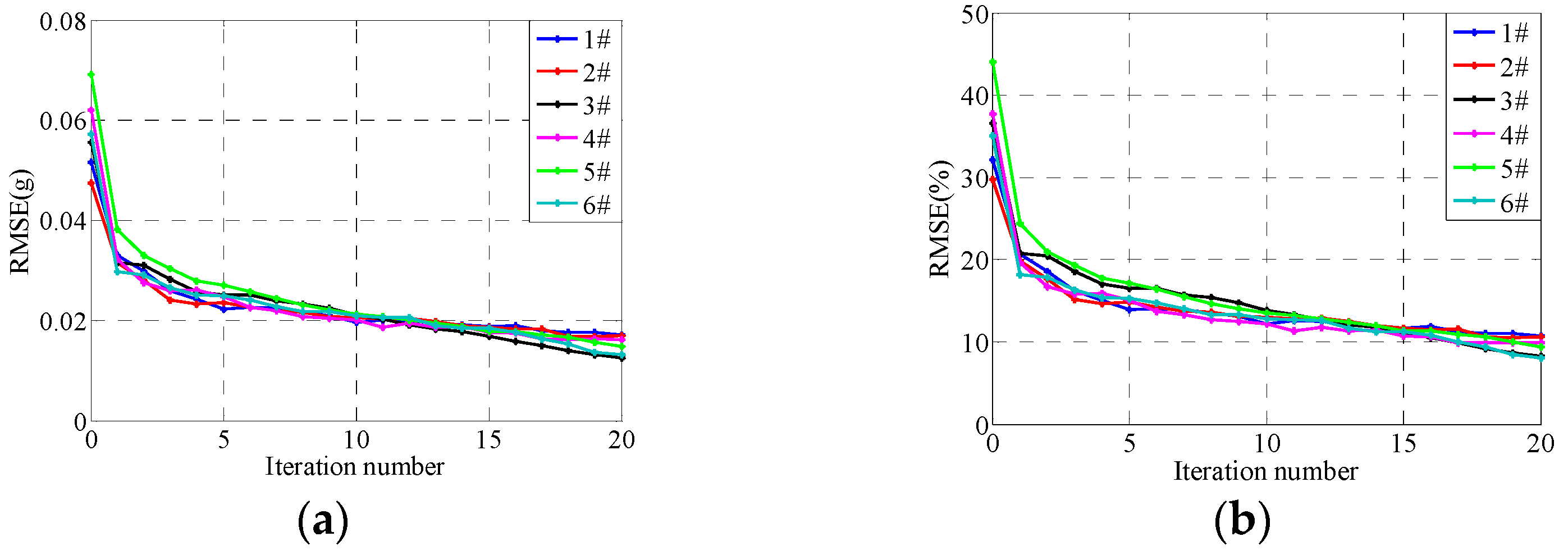1. Introduction
The electro-hydraulic shaking table is the most used and reliable earthquake simulation test equipment in the field of structure anti-seismic research, especially in recent decades [
1,
2,
3]. However, for earthquake experiments with structures with a large span such as trains, bridges and pipelines, etc., a single shaking table is not at all sufficient; thus, a shaking table array system composed of multiple identical or different shaking tables is proposed to solve this problem [
4,
5,
6,
7]. The shaking table array is more complex compared with the single shaking table system due to the tracking precision needed and also the synchronization precision needed to protect the test specimen [
8]. Usually, the large structure used to carry out earthquake test experiments is very complex and represents obvious nonlinearity, and the shaking table array system also encounters various disturbances, etc., all of which increase the difficulty of the control system and, thus, influence the experiment effect [
9,
10].
For the shaking table control problem, many experts have devoted much effort to improving the response performance from different perspectives. Guo [
11] adopts the latest advances in deep learning to develop a physics-guided long short-term memory network for system identification of the shaking table. Huang [
12] analyzed the coupling phenomena and reasons for the multiaxis hydraulic servo table based on a dynamic model of a multiaxis hydraulic servo shaking table. Li [
13] analyzed the effects of the characteristics of the dual shaking tables–specimen interaction on the system performance. Soleymani [
14] designed a fuzzy sliding mode supervisory controller for an electric seismic shaking table with variable payload. Zhao [
15] proposed modal space three-state feedback and feedforward control to solve the coupling problem. Cheng [
16] proposed a control algorithm based on the frequency-domain filtered-x least mean square adaptive algorithm to achieve power spectral density replication.
How to improve the control performance of shaking tables with system nonlinearity and parametric uncertainty has been of great interest. Yang [
11] proposed a combined controller with ultra-local model principle-based adaptive SMC to improve the swept-sine control precision of an electro-hydraulic shaking table considering the nonlinearities, uncertainties and unexpected disturbance. In [
12], an adaptive dynamic surface control method with nonlinear disturbance observers was proposed to improve the tracking precision of an electro-hydraulic shaking table with unknown time-varying disturbances. To obtain a good acceleration replication effect for a hydraulic shaking table, a feed-forward inverse model controller based on the RELS algorithm was proposed by Shen [
13]. In [
14], a novel stochastic gradient algorithm was presented to estimate the harmonic information of a hydraulic shaking table. Giacomo [
15] compared the results of two tests of automotive parts, respectively using a single-axis shaker and a three-axis shaker, which indicated that the MIMO control scheme had a better control effect. In [
16], an acceleration waveform replication scheme combining an offline feed-forward compensator with an online adaptive controller was proposed to improve the control performance of a hydraulic shaking table.
The offline iterative control method was proposed for the electro-hydraulic shaking tables system, and has been become the most widely and successfully applied compensation control method. Offline iterative control is an incausal feedforward control technique based on the inverse model of the system linear frequency model. Offline iterative control can realize the non-minimum phase system to obtain very high precision, which is unrealizable using the real-time feedforward control method. In 1976, Cryer first proposed the offline iterative control method and applied this technique to the road’s waveform replication of a four-channel road simulator [
17]. In 1977, MTS introduced the remote parameter control technique to an electro-hydraulic shaking table control system [
18]. Plummer reviewed and summarized the development history of the offline iterative control technique, and indicated its two main applications: vehicle experiments and seismic experiments [
19]. Underwood researched the application of the iterative control technique in random, sine and shock vibration experiment in depth [
20]. Bladh [
21] carried out a virtual vehicle persistence vibration test combining offline iterative control and a vehicle software model. Eksteen [
22] applied offline iterative control based on the nonlinear inverse model to time domain waveform replication. Yang [
23] realized acceleration time domain waveform replication using offline iterative control based on singular value threshold control.
The traditional iterative control mentioned above usually adopts the same small iterative gain to ensure the system is stable, which reduces the convergence efficiency and requires more iterative times to obtain high control precision. Liu [
24] proposed adaptive variable gain iterative control based on the frequency Fx-LMS algorithm and applied it to a shock vibration test. Cornelis [
25] improved traditional offline iterative control, increasing the identification precision by using the optimal exciting signals and introducing a weighting correction factor to update system frequency response function. Moten [
26] combined adaptive inverse control and offline iterative control to improve the control precision and convergence efficiency of shaking tables’ time domain waveform replication. Cuyper [
27] proposed hybrid control, combining offline iterative control and a real-time feedback controller based on H∞ robust control. Tang [
28] proposed inner model control combined with offline iterative control to improve the iterative convergence and control precision.
Aiming at the phenomenon that a nonlinear mechanical system may be a non-minimum phase system and the system can be non-convergent using traditional iterative control, Smolders [
29] proposed nonlinear iterative control based on the Newton optimization algorithm to improve the control precision and convergence speed of a four-channel road simulator. Daley [
30] applied iterative control based on the gradient optimization algorithm to a road simulator to reduce the iterative times and improve the system robustness. Underwood [
31] adopted the quasi-Newton optimization algorithm to update system impedance and iterative gain to realize sine sweep adaptive iterative control. Yang [
32] proposed a single sine sweep control method based on the extended quasi-Newton optimization algorithm to correct system FRF to solve the potential stability problem.
Roberts [
33] proposed iterative control based on the Broyden optimization algorithm and analyzed the global convergence to solve the slow convergence problem of simulation test equipment using traditional iterative control. Gunnarsson [
34] proposed the frequency domain optimization iterative learning control method to solve the problem of minimizing the control error of a nonlinear system. Adali [
35] researched the equivalence relation of the optimization algorithm in a real domain and a complex domain and the advantage in the complex domain, and then applied the complex domain optimization algorithm to the nonlinear function of signal processing. Brandwood [
36] proposed an optimization algorithm based on a complex vector gradient operator to solve the real valve scalar optimization of the complex vector function. Hjorungnes [
37] studied the complex domain optimization iterative algorithm and its application in signal processing. Kreutzdelgado [
38] deduced the gradient operator and related complex differential algorithm in a complex domain. Sorber [
39] studied the unconstrained optimization algorithm of complex vector real valve function and its related theory.
This paper presents a novel adaptive iterative control method based on the complex domain optimization algorithm to improve the system convergence rate and system stability. The complex domain quasi-Newton optimization algorithm is deduced based on the real domain quasi-Newton optimization algorithm. The complex steepest gradient iterative gain is proposed to obtain a better convergence rate, which can better compensate the phase error of the control system. The proposed adaptive iterative control can make the system stable even if the identified system model error is quite large, and make the system converge to the desired signal more quickly than the traditional iterative control. The proposed method can be introduced to the shaking tables system to efficiently realize the precise acceleration time domain waveform replication.
The remainder of this paper is organized as follows.
Section 2 presents the investigated electro-hydraulic shaking tables system and the basic principle of the shaking tables’ traditional iterative control method. In
Section 3, the proposed complex domain adaptive iterative control scheme is introduced.
Section 4 shows the application of the proposed complex domain optimization algorithm to shaking tables’ adaptive iterative control. Experiments are carried out to validate the performance of the designed control method in
Section 5, followed by
Section 6, which briefly concludes the paper.
3. The Complex Optimization Algorithm-Based Iterative Learning Control
As is mentioned above, to solve problem of offline iterative learning control, it is necessary to adapt different iterative gains in different frequency points. Thus, to obtain a better control effect, the optimal iterative gain and system impedance update are developed during the iteration process. The purpose of iterative control is to minimize the control error . To solve the potential stability and convergence problem of iterative control, this paper proposed an adaptive iterative control based on the complex optimization algorithm, which makes the response signal close to the desired signal to reduce through optimize iterative gain and update system impedance . Due to the fact that the computation is realized in the complex domain, which contains magnitude and phase, this method belongs to complex optimization theory.
The essence of the MIMO iterative control problem for shaking tables is the minimum of the object function described using the L2 norm of control error:
The purpose of iterative control is to find the optimal complex driving signal , which makes Equation (14) the minimum. However, the electro-hydraulic shaking tables system is a typical nonlinear system, which means is nonlinear and is the function of the driving signal . Thus, the problem of this paper can be considered to solve the nonlinear norm function shown in Equation (14), whose optimization is the function of complex vector , so this paper will research the optimization theory in the complex domain.
3.1. The Real Optimization Algorithm Theory
Assuming the dimensions of the input and output signals are both n, the identified system FRF matrix and the corresponding impedance matrix are both n × n complex matrixes. The real domain optimization theory is relatively complete and mature. However, the complex domain optimization algorithm is still incomplete; thus, this paper will research the complex optimization algorithm based on the real optimization algorithm and the mapping relationship between real vector space and complex vector space.
The local unconstrained minimum of nonlinear function
in real vector space is given by
where
is the n dimension real vector in
space and
is the nonlinear mapping of
.
Assume that is twice continuously differentiable to , then the goal of the optimization problem is to find optimal to minimize the objective function . This problem belongs to optimization theory in real vector space and can be solved by applying the following theorem.
Theorem 1. Letting be a real valued function defined on a closed and bounded region in ,
(1) if is an inner point of , at which achieves an external value, and if has a continuous first partial derivative, then , that is, the partial derivative of is zero at the optimal vector .
(2)
if has a continuous second-order partial derivative in a neighborhood of any inner point of , then for an arbitrary in , there is the quadratic Taylor representation of : Theorem 1 is the basic principle to solve the unconstrained optimization problem. The common method is using the quadratic function given by Theorem 1(2) and the optimal condition given by Theorem 1(1) to define optimal vector, in which there is
, for Equation (15),
. At an arbitrary vector near the optimal vector
, executing the Taylor series expansion to
, then the approximate linear equation is given by
Equation (16) is commonly used to solve the optimization problem by generating a sequence of vectors
, which converge to the optimal vector to minimize
. The methods used to solve Equation (16) are Newton–Gauss, Newton–Raphson and quasi-Newton, etc. The Newton–Raphson is an efficient algorithm that uses the gradient and Hessian matrix of an objective function to find the minimization sequence. The minimizing sequence
is given by the following recursion:
where
is the iteration step to minimize
and
is the Newton direction for the nonlinear optimization problem and is described as
where
is the Hessian matrix of
to
and
is the Jacobian matrix of
to
.
For the Newton iterative optimization method, there is the following local convergence theorem.
Theorem 2. Let be continuously differentiable in an open convex set . Assume that there is , such that , exists with and . Then, there is an such that for all , the sequence generated by is well defined, converges to and obeys , which is quadratic convergence.
The
in Theorem 2 is the gradient of
in Equation (2) and the Jacobian of
is the Hessian matrix of
. Submit
into the Newton direction of the nonlinear norm function shown in Equation (17), and it can be obtained that
It can be seen from Equation (18) that
is the product of the inverse matrix of the Hessian matrix and the gradient matrix of
. If the first item of the Hessian matrix can be ignored, then submit the approximate Hessian matrix into Equation (19), and there is
Submitting Equation (20) into (17), there is the Newton–Gauss optimization algorithm, which has global convergence.
From the above analysis, it can be seen that it is necessary to compute the gradient and Hessian of the function to solve the optimization problem. To simplify this problem, some approximate Secant and Hessian techniques are studied. The most successful approximate method is the Broyden method, whose basic idea is to use an estimate of the Jacobian matrix in Theorem 2 instead of the actual Jacobian matrix, as is shown in following.
Let
and
,
, then there are the following vector and matrix update equations:
It is similar to the Newton–Gauss method, but it uses instead of the Jacobian matrix at . There is a similar global convergence theorem for this method.
Theorem 3. Let the assumptions in Theorem 2 exist, and there is , which makes and , then sequence generated by Equation (22) converges q-superlinearly to .
If is affine, then the quasi-Newton method given by Equation (22) converges finitely and , that is, this method converges to optimal vector in no more than iterations.
3.2. The Complex Optimization Algorithm
This paper will research the optimization algorithm in complex space and the local unconstrained minimum to nonlinear function
given by
where
and
is holomorphic of
.
Let
be the complex plane
and
be continuously differentiable as a function of
, then
is called the
function and its derivative with respect to complex
and conjugate complex
is, respectively,
Assuming that
is holomorphic with respect to each component, then
is a holomorphic function. Let
and
be continuously differentiable,
,
and
, then there is
According to Equation (25), the complex gradient and Hessian matrix with respect to
and
of function
, which is twice continuously differentiable, it can be deduced that
For function
, its Taylor series of complex derivatives at complex vector
is
Equations (29) and (30) are, respectively, the holomorphic and non-holomorphic Hessian. For , if the non-holomorphic Hessian is positive definite at , then is strictly plurisubharmonic.
Let
be open and
be strictly plurisubharmonic in
, and for
, there is
,
and the following inequation exists:
Equation (32) indicates that when and is strictly plurisubharmonic, there is , , which means has a strict local minimum at .
According to Theorem 2, it can be seen that when the start point is close enough to optimum vector, it can be used to find the optimal complex vector to minimize the second-order approximation iteratively shown in Equation (28). Equation (32) shows that the holomorphic Hessian can be ignored in a neighborhood of optimal vectors, which makes the Newton–Raphson update method for complex vector space.
According to Theorem 1, the complex and conjugate complex gradients vanish if the real gradient vanishes, which is the classic necessary condition that optimal vector must satisfy. Describe
using the approximate second order polynomial in Equation (28) ignoring the last item
, compute the complex and conjugate complex gradients of Equation (30) and set the results to zero, then the complex Newton–Raphson update algorithm is obtained, which is similar to the real algorithm, in which the update sequence
satisfies Equations (33) and (34) and converges to the optimal point.
Assume the holomorphic Hessian of
is zero, then there is
According to the mapping relationship of real vector space and complex vector space shown in Equations (24)–(27), and Theorems 1 and 2, the local convergence of the complex vector Newton–Raphson update algorithm shown in Equation (35) can be proven.
The modification to the complex Newton–Raphson algorithm making the algorithm have global convergence is shown in the following:
where
is the steepest descent gain to minimize
.
Combining Equation (36) with the minimum norm shown in Equation (23), in which
is the holomorphic function, the gradient of
can be obtained:
The holomorphic and conjugate non-holomorphic Hessian is given by
From Equation (38), it can be seen that the holomorphic Hessian is zero when the holomorphic Hessian of is zero or is zero, or the dot product in Equation (38) is zero. For the iterative control problem of multi-dimension shaking tables shown in Equation (14), can be satisfied at the optimal point of , because is the control error vector, and it is zero at the global optimal vector of .
The analysis above indicates the Broyden method can solve the optimization problem of the nonlinear system well; thus, we will extend the real vector space Broyden method to the complex vector space Broyden.
Let
,
and
, and there is the complex Broyden update algorithm:
The proof of the global convergence of the complex Broyden update algorithm can follow from converting the complex formulation to the real vector formulation and real Broyden method convergence theorem shown in Theorem 3. When is conjugate affine, the complex Broyden method converges to the optimal vector within iterative steps, that is, the algorithm is finitely convergent.
3.3. The Complex Steepest Descent Algorithm
The traditional method for the optimization algorithm is using the positive steepest descent gain to ensure convergence. However, for the complex quasi-Newton method, the complex steepest descent gain would be more satisfactory. Compared with the classical necessary condition
at optimal vector
, Equation (25) has the simpler necessary condition
. To utilize the nature of the optimization problem, the descent condition on the root finding algorithm in the condition is used to obtain the sequence
:
The way to ensure that condition (40) satisfied is to use the steepest descent approach. For Equation (39), the necessary condition is
Consider
as function of
, and describe it with Taylor series, then there is
where
.
The complex quantities of the steepest descent condition shown in Equation (41) are
Solve Equation (43), and the steepest descent gain can be obtained:
If the holomorphic Hessian of
is approximately zero, Equation (44) is simplified as
According to the optimal iterative step
, applying the complex steepest descent, there is
Equation (47) indicates that the complex steepest descent and change in are orthogonal, that is, the complex descent technique produces a monotonically decreasing sequence of values for the objective function.
4. The Adaptive Iteration Learning Control for Shaking Tables
The shaking tables’ iterative driven signal update function shown in Equation (8) is similar to the steepest descent method of the complex Newton–Raphson algorithm, whose object is to minimize the object function
The difference between Equation (8) and traditional iterative control is that the complex matrix and complex error replace the real positive Hessian and real gradient. Due to this, in equation (48) is a plurisubharmonic function and is the function of and . Thus, this paper can apply the complex optimization algorithm proposed previously to solve the problem of shaking tables’ iterative control.
4.1. Application of Complex Optimization Algorithm
This paper researches the optimization problem of the complex vector real-valued function, and the problem can be described using the complex vector error and complex matrix . The shaking tables system is a nonlinear system, so FRF is the function of driven signal . For a nonlinear time unvarying system, is holomorphic, that is, is holomorphic, then Equation (48) is a plurisubharmonic function. Therefore, we can use the optimization theory in complex vector space proposed before to obtain the driven signal vector sequence , which converges to optimal vector to minimize the objective function .
The nonlinear function
of
in iterative control is
Combining Equations (38) and (49), the conjugate-transposed gradient of
can be obtained, so that
Combining Equations (39) and (50), the complex conjugate of the non-holomorphic Hessian of
can be obtained, so that
Combining Equations (40) and (51), the holomorphic Hessian of
can be obtained, so that
According to Equation (52), the following algorithm shown in Equations (53) and (54), which converges to
, can be obtained:
According to Equations (50)–(54), the global Newton–Raphson update algorithm of shaking tables’ iteration control can be obtained, so that
Assume
is a holomorphic function of
, and the complex conjugate gradient can be obtained according to Equation (38):
Additionally, the non-holomorphic Hessian can be obtained, so that
Let the holomorphic Hessian be approximately zero, and the simplified complex steepest descent Newton update algorithm can be obtained according to Equations (53)–(57):
Apply the proposed complex Broyden update algorithm to the iterative control to obtain the optimal vector that makes the objective function vanish. In this case, the approximate Jacobian becomes an approximate Hessian, and the approximate inverse Hessian is described as
Instead the real Hessian with approximate Hessian in Equation (59), there is
Comparing Equations (8) and (60), we note that the traditional iterative control algorithm is similar to the proposed complex Broyden update algorithm. However, it is only similar in form, and the difference is the approximate impedance sequence instead of initial , and complex gain sequence instead of the real non-optimized iterative gain . The complex gain can compensate phase error in impedance estimation.
According to Equation (39), the approximate impedance
and control system
can be obtained, so that
where
.
The above algorithm produces an adaptive iterative control, but this method cannot ensure the approximate Hessian positive definite, which is needed to ensure the descent direction for this method. The aforementioned complex steepest descent can solve this problem, which can ensure the descent direction, that is, the decrease direction of the control error.
To effectively use the steepest descent method, we need to find a complex
minimizing the next control error
, and there is
.The shaking tables system is holomorphic, and combining Equation (60):
Combining Equations (42), (43) and (47), it can be derived that
where
.
If the objective function given by Equation (47) is approximately Hermitian quadratic and the system is holomorphic, then calculating the complex derivative of
in Equation (64) with respect to
and setting it to zero, the optimal
can be obtained, so that
The control process described in Equation (62) using complex steepest descent gain reduces the control error at each iterative control loop, and the process converges in, at most, iteration steps for a linear system. The algorithm given by Equations (60) and (61) is a locally q-superlinear convergent for a nonlinear system, and in this case, the algorithm will track system impedance as it varies with drive and control response amplitudes if the control and impedance errors are small.
4.2. Realization of Adaptive Iteration Learning Control for Shaking Tables
From Equation (64), it can be seen that and are unknown, and the optimal gain depends on unknown . The two-step control loop iteration method is applied to solve this problem, where a learning loop is used to measure to calculate . The obtained is used to correct the control error in a control loop, and then to update the impedance matrix estimation, followed by the next learning loop iteration, and so forth until the control precision is satisfactory.
The traditional method given is used to obtain the driven vector of the learning loop:
Due to learning driven vector change being relatively small, Equation (66) holds. According to Equation (63), the approximate response in the learning loop is
From Equation (67), it can be seen that unknown
can be described using a measurable system response. Combining Equation (46), the optimal gain
only depending on measurable control system quantities can be obtained, so that
The problem of complex optimization iteration control for shaking tables has been solved and all of the quantities used to update
and
are available in the control process. The method given by Equations (60), (61), (66) and (68) forms an adaptive iteration learning control method based on the complex optimization algorithm and complex steepest descent for shaking tables, and the total control process diagram is shown in
Figure 4.
From
Figure 4, it can be seen that the control process contains three main parts: an initial iterative step, iterative loop and learning loop. In this process, the iterative loop and learning loop are performed alternately until the control precision at each frequency is satisfactory. After the control precision is satisfied at a particular frequency, then the driven spectrum at this frequency does not change at all and the iteration repeat is only still performed at other frequency points. The repeat control can realize the fast and stable adaptive optimization iteration control of the shaking tables system and accurately reproduce the acceleration time domain waveform.

